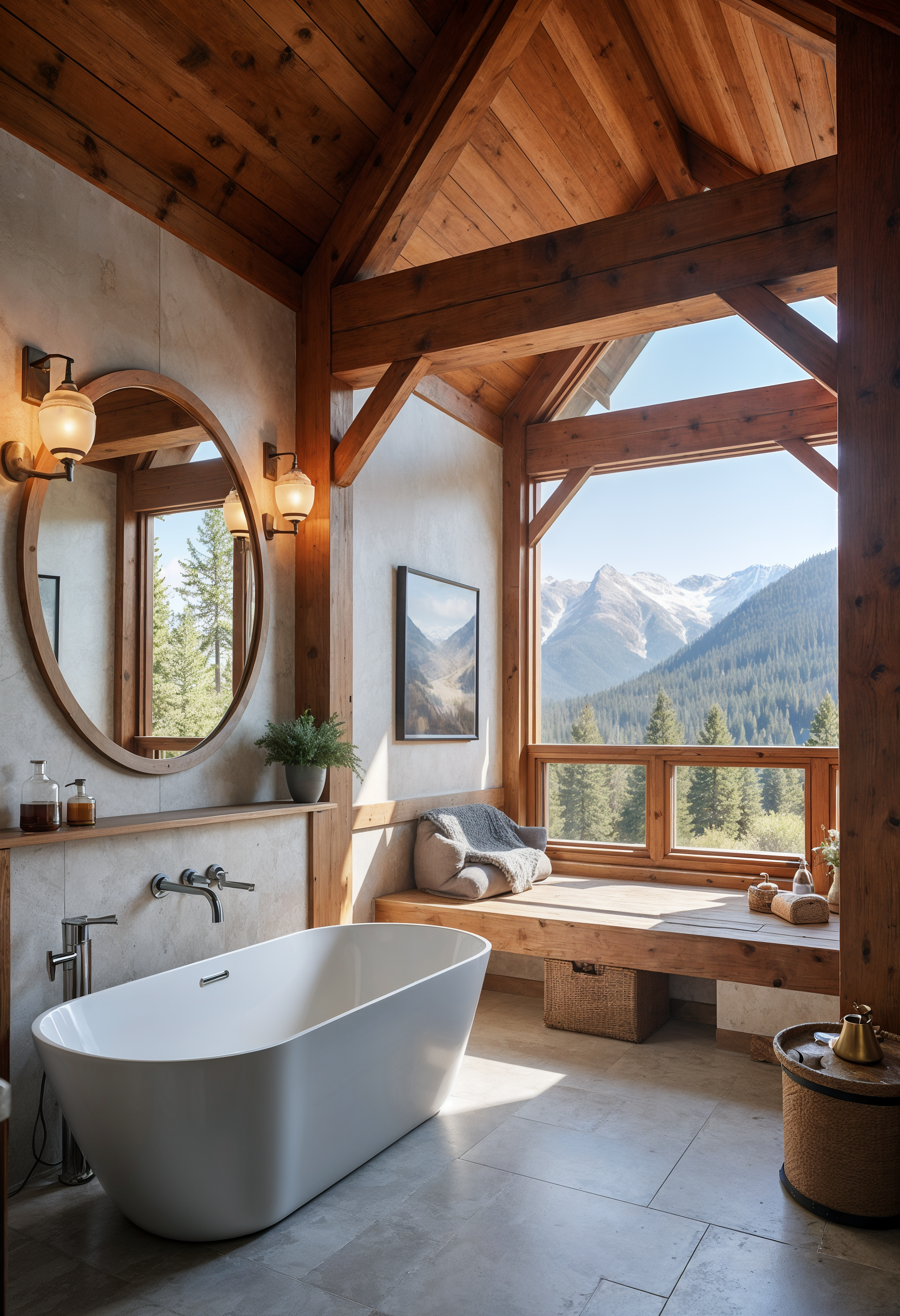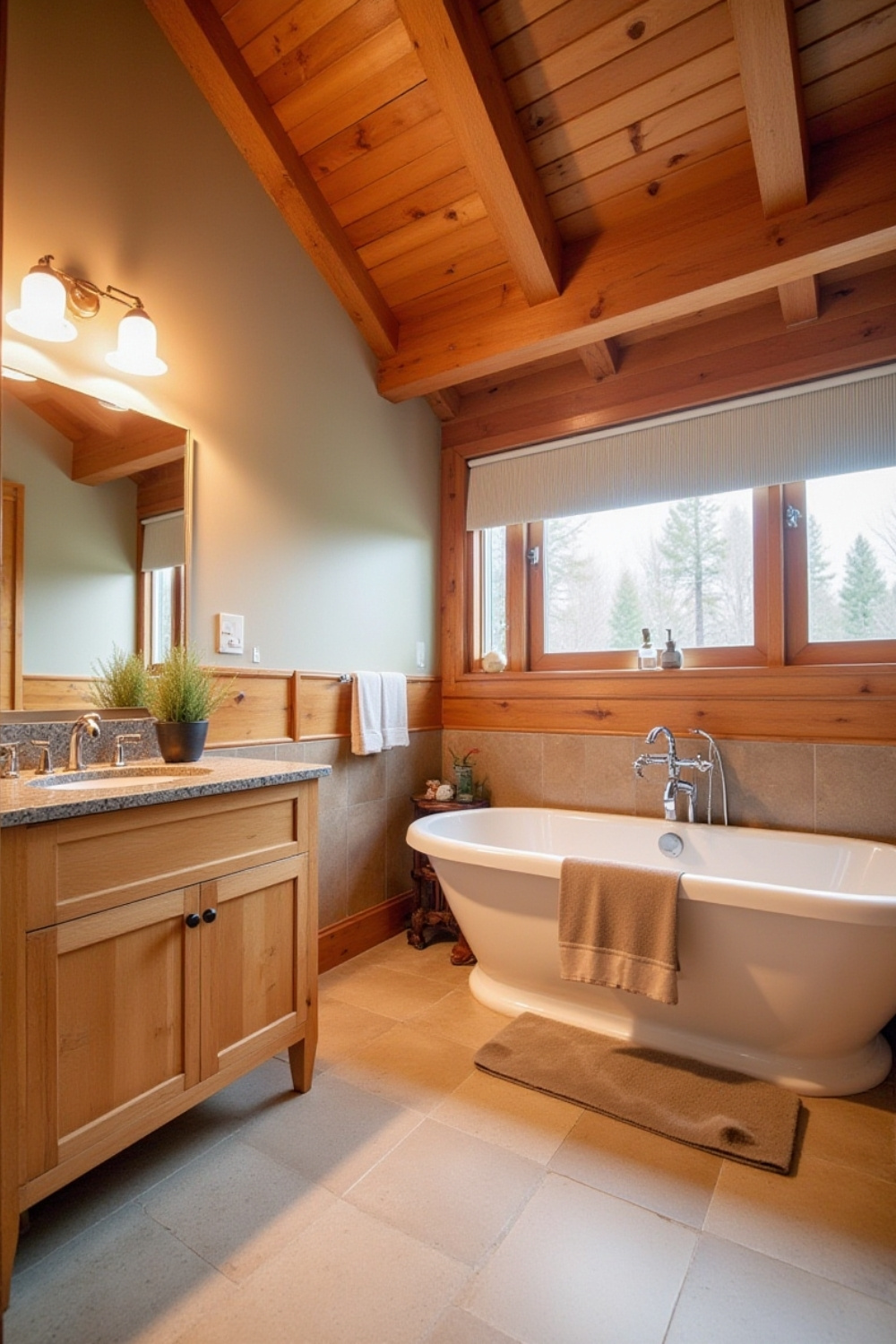In my experience working with homeowners on cabin and small space renovations, I’ve observed that log cabin bathrooms often present unique challenges that require balancing rustic character with modern functionality. Through various cabin renovation projects, I’ve learned that thoughtful design typically maximizes limited space while preserving the authentic charm that defines log cabin living.
Note: For any plumbing work, electrical installations, structural modifications, or major fixture installations mentioned in this article, always consult with licensed professionals to ensure safety, code compliance, and proper installation.
What makes log cabin bathroom design particularly challenging is the need to integrate modern plumbing and electrical systems within rustic structures while maintaining authentic character and ensuring adequate moisture control. I’ve found that homeowners often choose cabin living because they typically value natural materials and traditional aesthetics, but small bathrooms require creative solutions to accommodate necessary modern amenities.
The key to successful small log cabin bathroom design often lies in selecting space-efficient fixtures, appropriate materials for cabin environments, and moisture management systems that protect wood structures. Effective designs typically incorporate natural materials, efficient layouts, and proper ventilation while ensuring all installations meet current building codes and safety standards.
Here are 29 small log cabin bathroom design concepts that often work well in various cabin styles and budgets, based on observations from numerous cabin renovation projects.
1. Natural Stone Integration: Rustic Foundation Elements
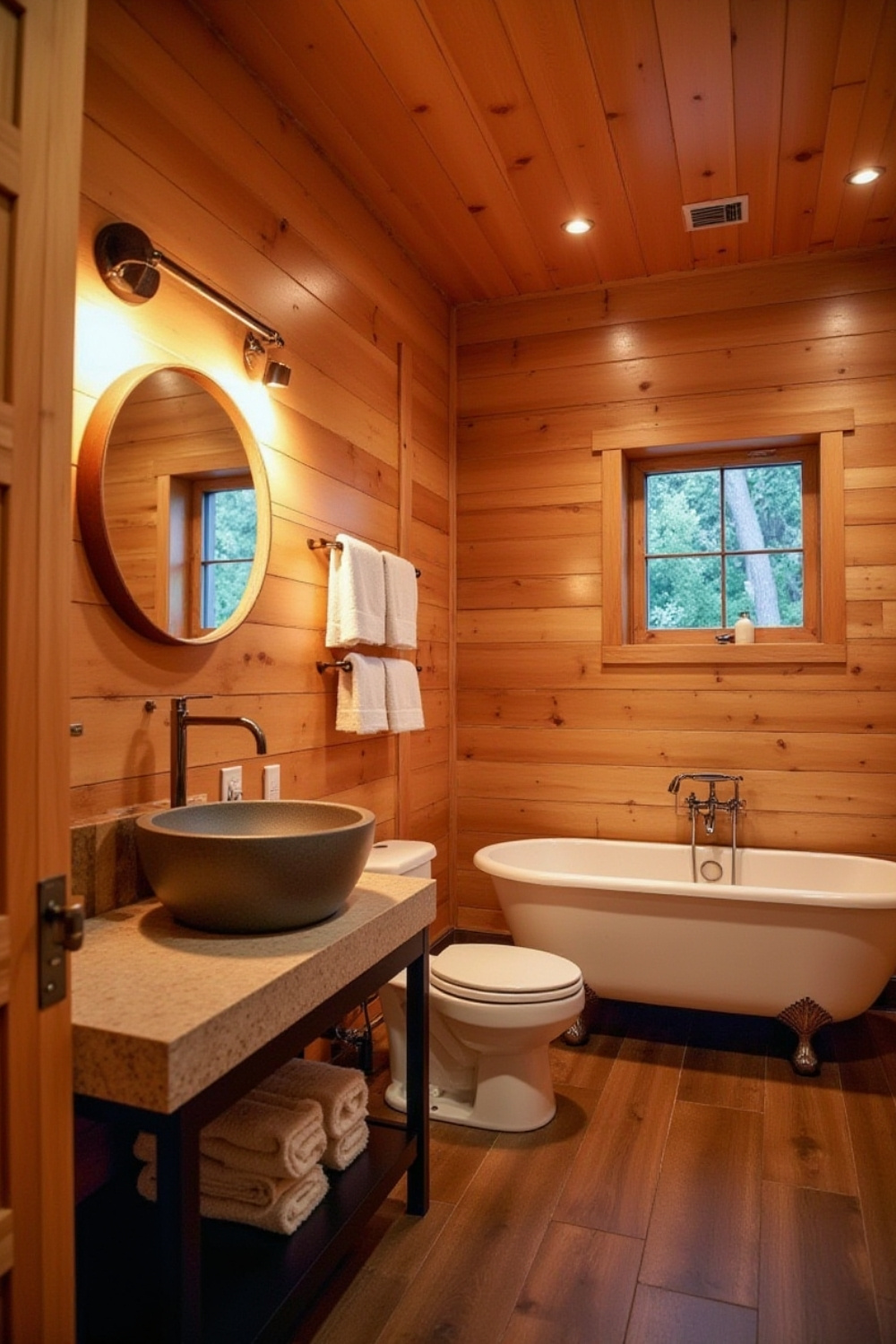
This material approach often appeals to cabin owners seeking authentic, durable surfaces. Stone sinks, natural tile, and bronze fixtures typically create traditional cabin character while providing practical functionality for daily use.
Design consideration: Natural stone often requires proper sealing and maintenance in bathroom environments, while traditional fixtures typically need professional installation to ensure proper function and code compliance.
Practical benefit: Stone materials often provide excellent durability and aging characteristics, while authentic fixtures typically increase property value and maintain cabin authenticity.
2. Space-Maximizing Minimalism: Efficient Layout Solutions
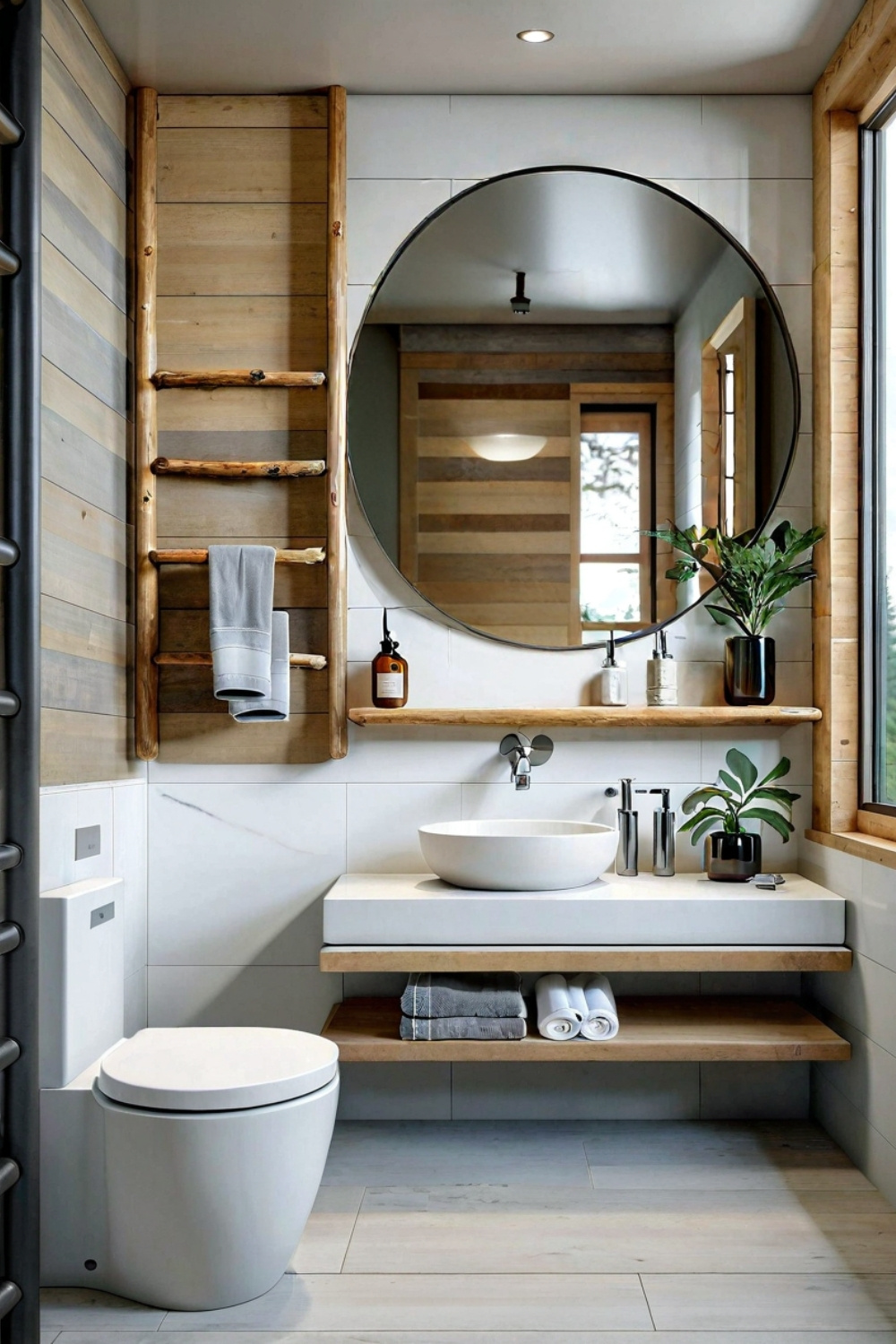
This design strategy often appeals to owners of compact cabins needing maximum functionality. Floating vanities, large mirrors, and neutral colors typically create illusions of spaciousness while maintaining practical utility.
Design consideration: Wall-mounted fixtures often require adequate structural support and proper plumbing access, while neutral schemes typically need textural variety to prevent sterile appearances.
Practical benefit: Efficient layouts often improve daily usability, while space-saving designs typically allow for better traffic flow in compact areas.
3. Forest-Inspired Elements: Natural Theme Integration
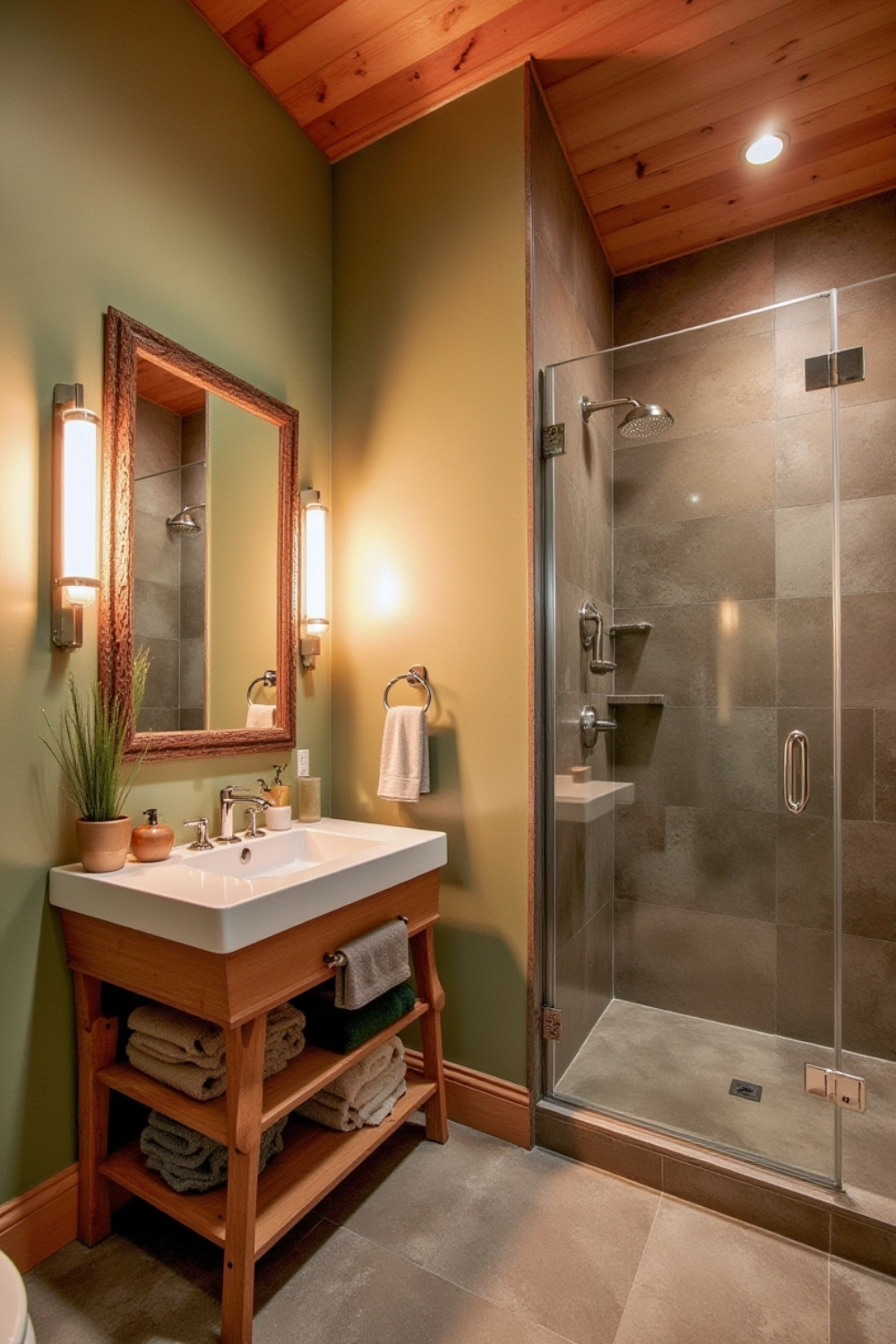
This thematic approach often appeals to cabin owners wanting stronger connections to surrounding woodland environments. Custom timber vanities, natural materials, and forest colors typically create serene environments that reflect outdoor settings.
Design consideration: Wood installations often require appropriate sealing and moisture protection, while natural themes typically need coordination with practical storage and lighting needs.
Practical benefit: Nature-inspired designs often create calming environments, while natural materials typically improve indoor air quality and provide psychological benefits.
4. River Rock Aesthetics: Water-Inspired Natural Elements
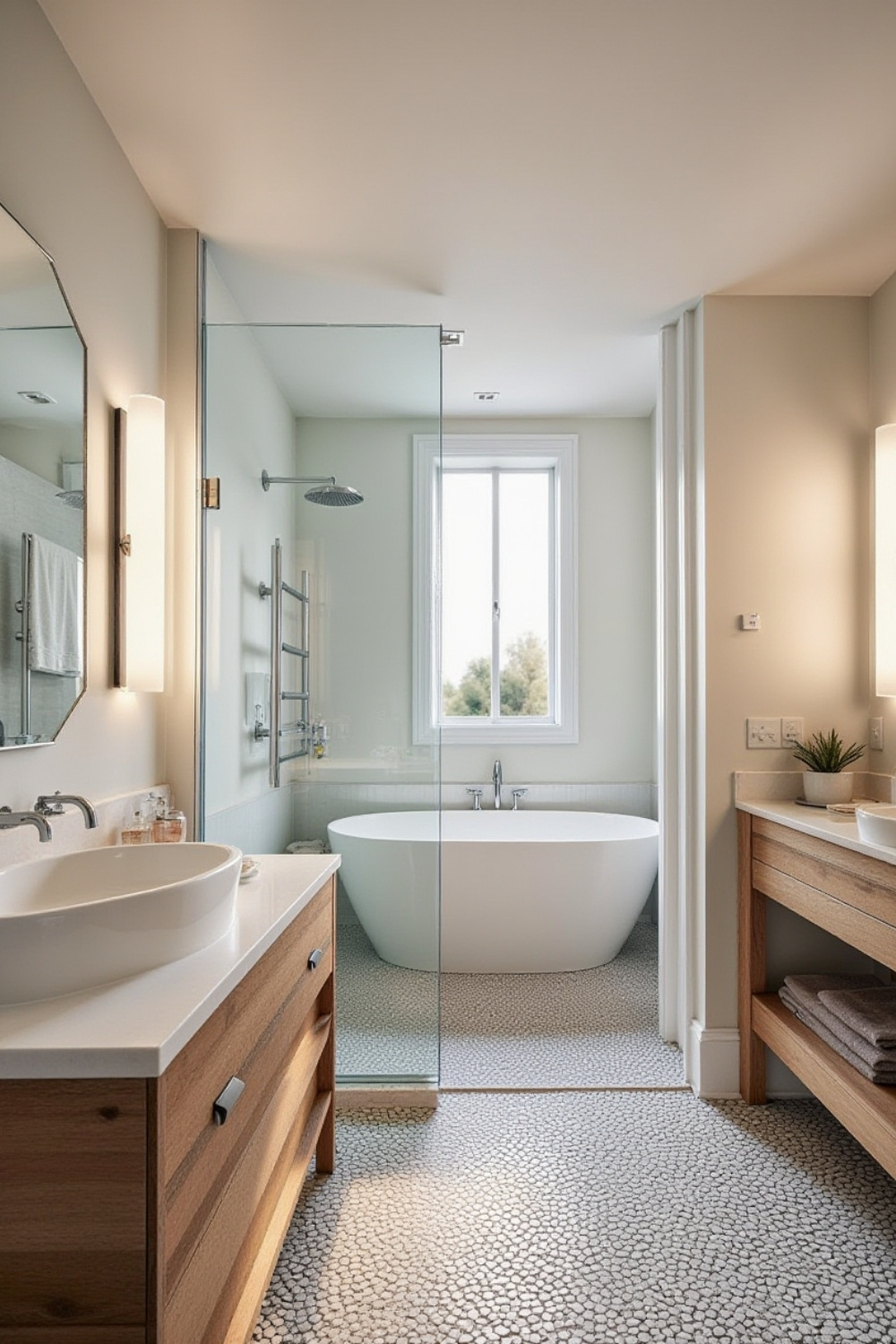
This material strategy often appeals to cabin owners near water features seeking thematic consistency. Pebble flooring, reclaimed wood, and glass elements typically create streamside atmospheres while maintaining functionality.
Design consideration: Pebble flooring often requires professional installation and appropriate drainage, while reclaimed materials typically need evaluation for bathroom moisture conditions.
Practical benefit: Natural textures often provide slip resistance, while water-themed elements typically create relaxing, spa-like environments.
5. Mountain Climate Integration: Alpine-Inspired Design
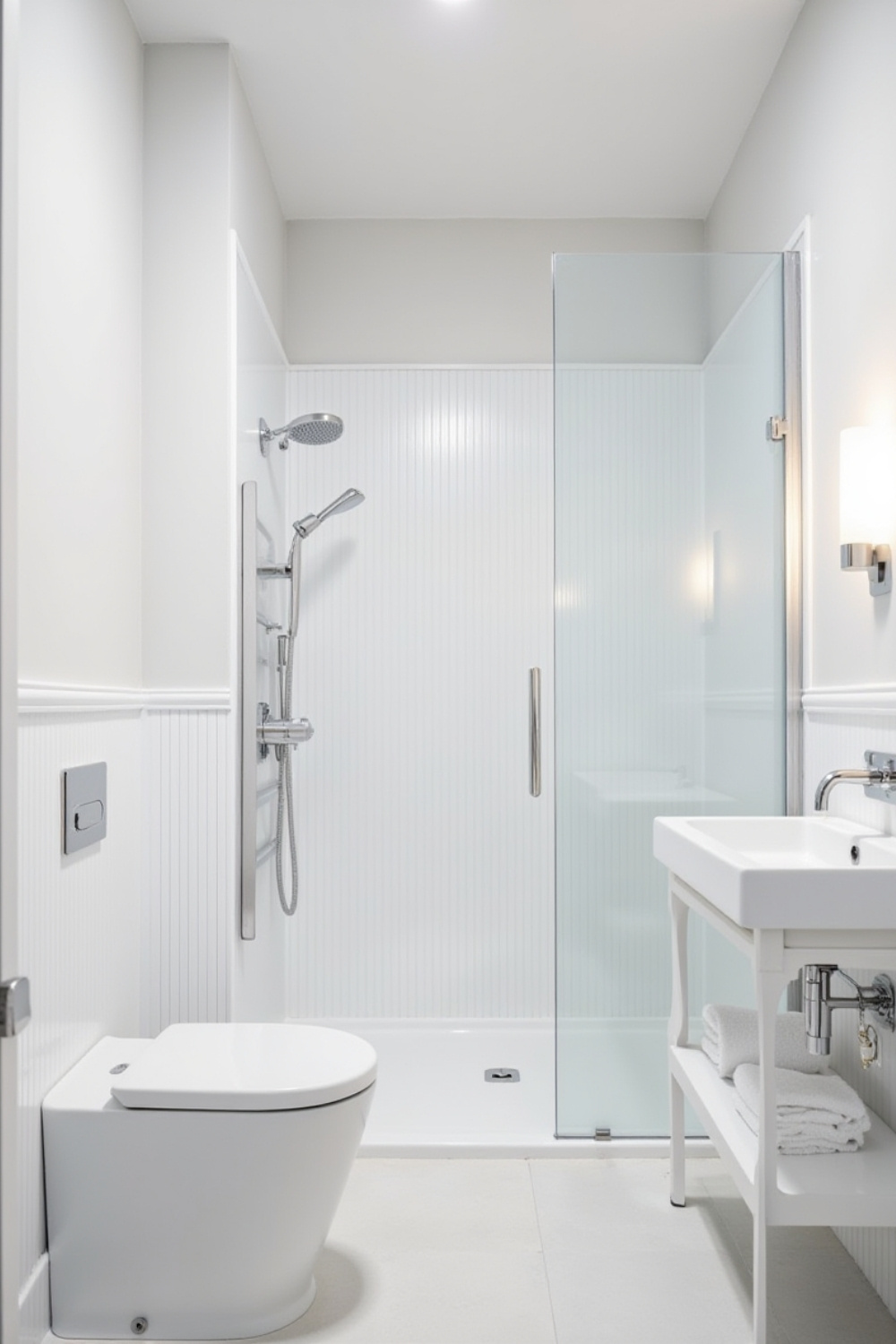
This regional approach often appeals to high-altitude cabin owners seeking climate-appropriate aesthetics. Light colors, efficient fixtures, and mountain-themed accents typically create fresh, crisp environments.
Design consideration: Mountain cabins often require enhanced insulation and heating considerations, while light colors typically need adequate artificial lighting for darker winter months.
Practical benefit: Climate-appropriate design often improves comfort during seasonal variations, while efficient systems typically reduce energy costs in remote locations.
6. Sustainable Eco-Integration: Environmental Responsibility Focus
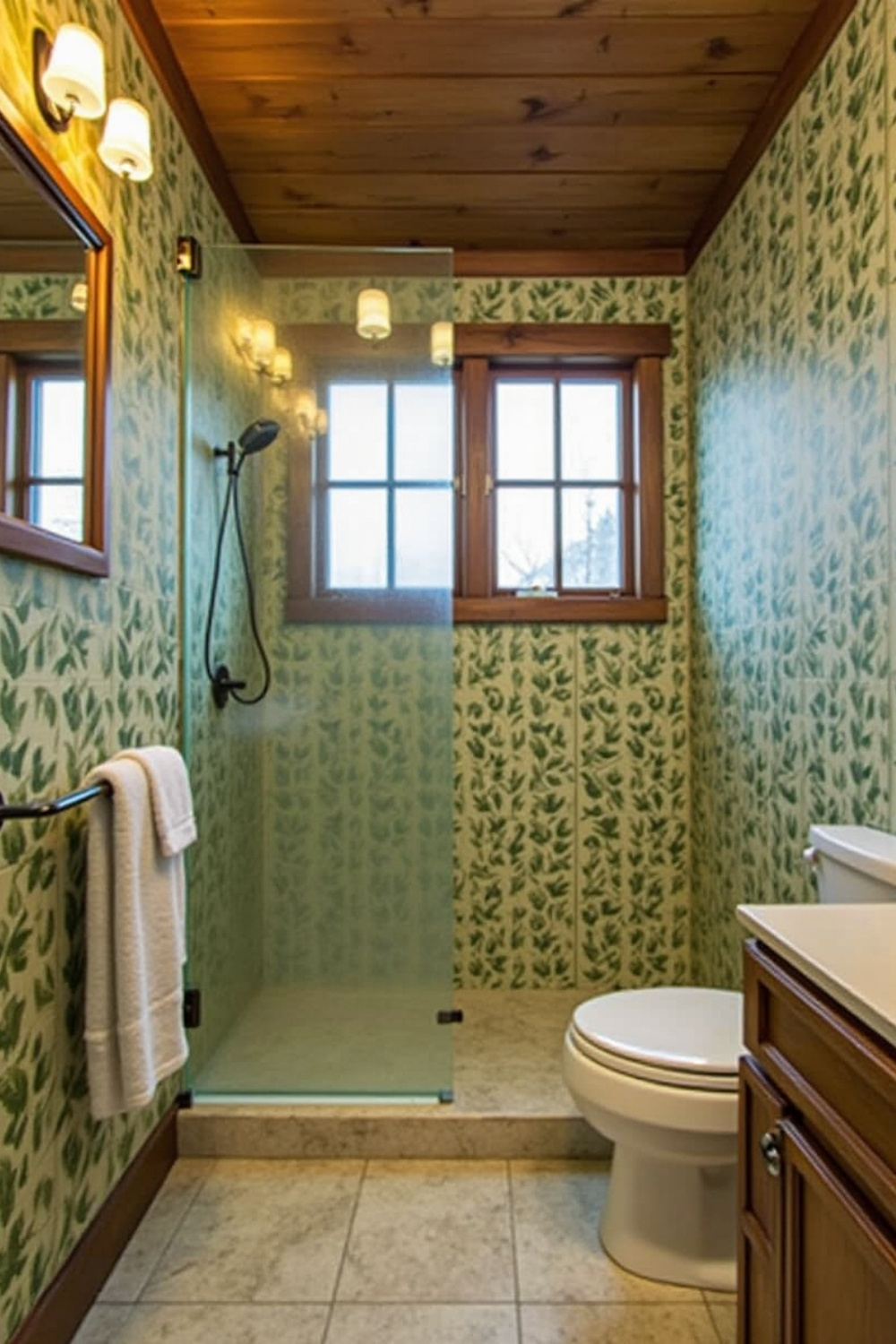
This environmental approach often appeals to cabin owners prioritizing sustainability and resource conservation. Energy-efficient fixtures, recycled materials, and low-impact systems typically create environmentally responsible bathrooms.
Design consideration: Eco-friendly fixtures often require research for performance and longevity, while sustainable materials typically need evaluation for bathroom moisture and durability requirements.
Practical benefit: Environmental systems often reduce operating costs, while sustainable choices typically align with cabin lifestyle values and environmental consciousness.
7. Panoramic View Integration: Scenic Connection Design
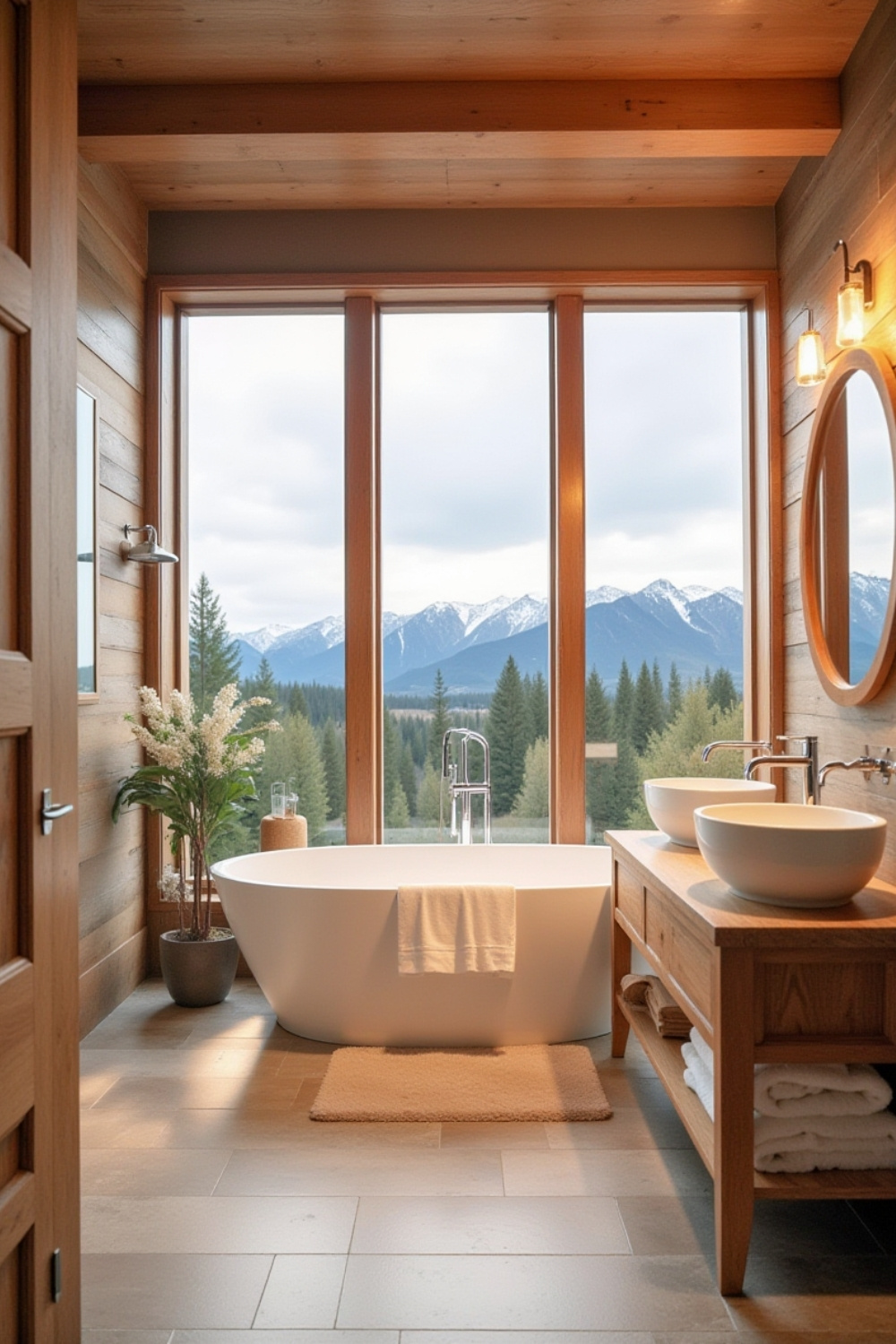
This architectural approach often appeals to cabin owners with scenic locations wanting to maximize natural beauty. Large windows, spa elements, and view-oriented layouts typically create connections to surrounding landscapes.
Design consideration: Large windows often require appropriate privacy solutions and energy-efficient glazing, while spa elements typically need adequate structural support and professional installation.
Practical benefit: Natural views often improve psychological well-being, while spa features typically provide relaxation and stress relief in natural settings.
8. Compact Nook Utilization: Space-Efficient Placement
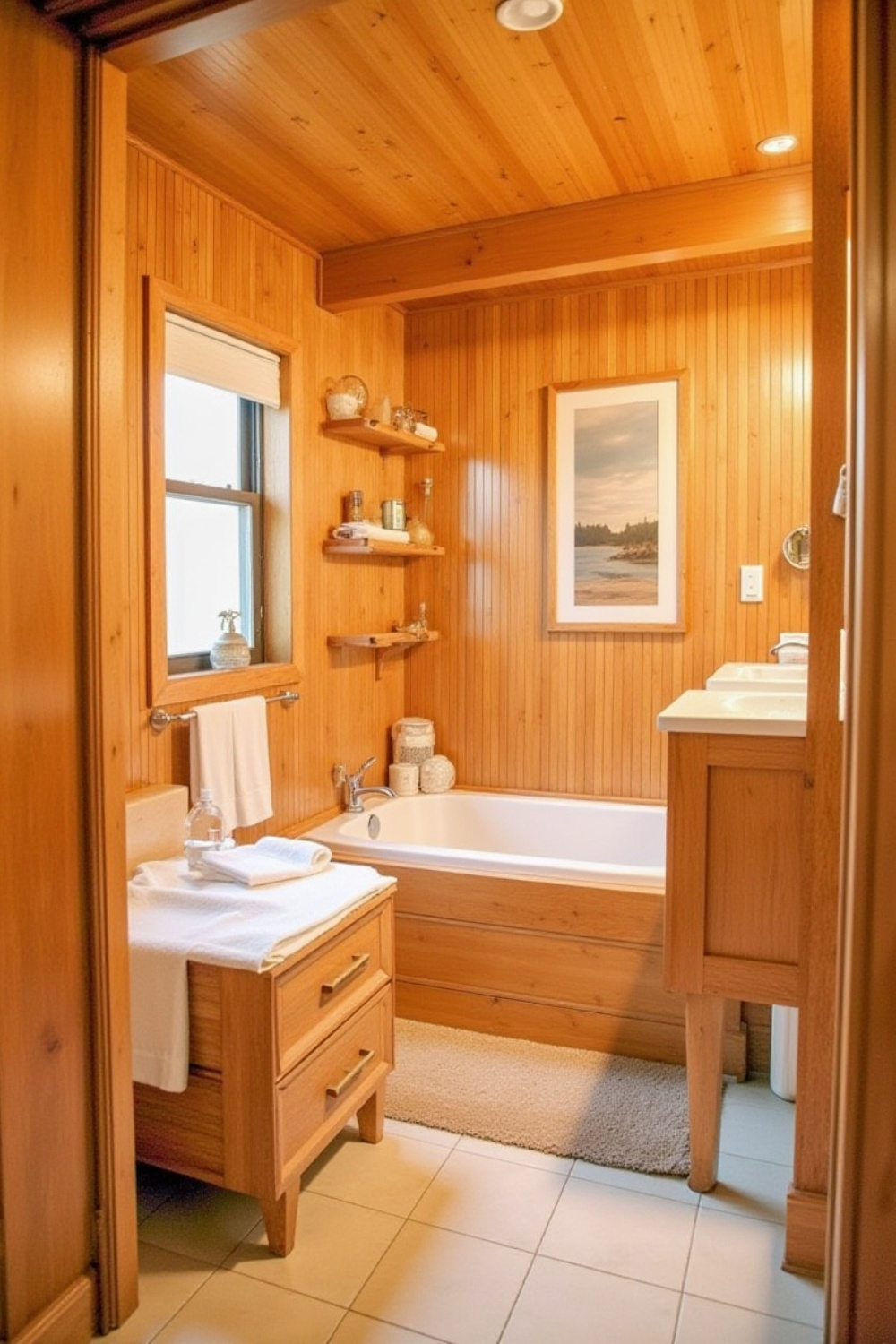
This spatial strategy often appeals to cabin owners with limited space needing creative solutions. Under-eave installations, built-in storage, and efficient fixtures typically maximize functionality in minimal space.
Design consideration: Angled spaces often require custom fixtures and careful measurement, while built-in elements typically need professional installation for proper fit and function.
Practical benefit: Creative space use often provides bathing facilities where none existed, while efficient design typically maintains bedroom and living space priorities.
9. Scandinavian Simplicity: Nordic Design Integration
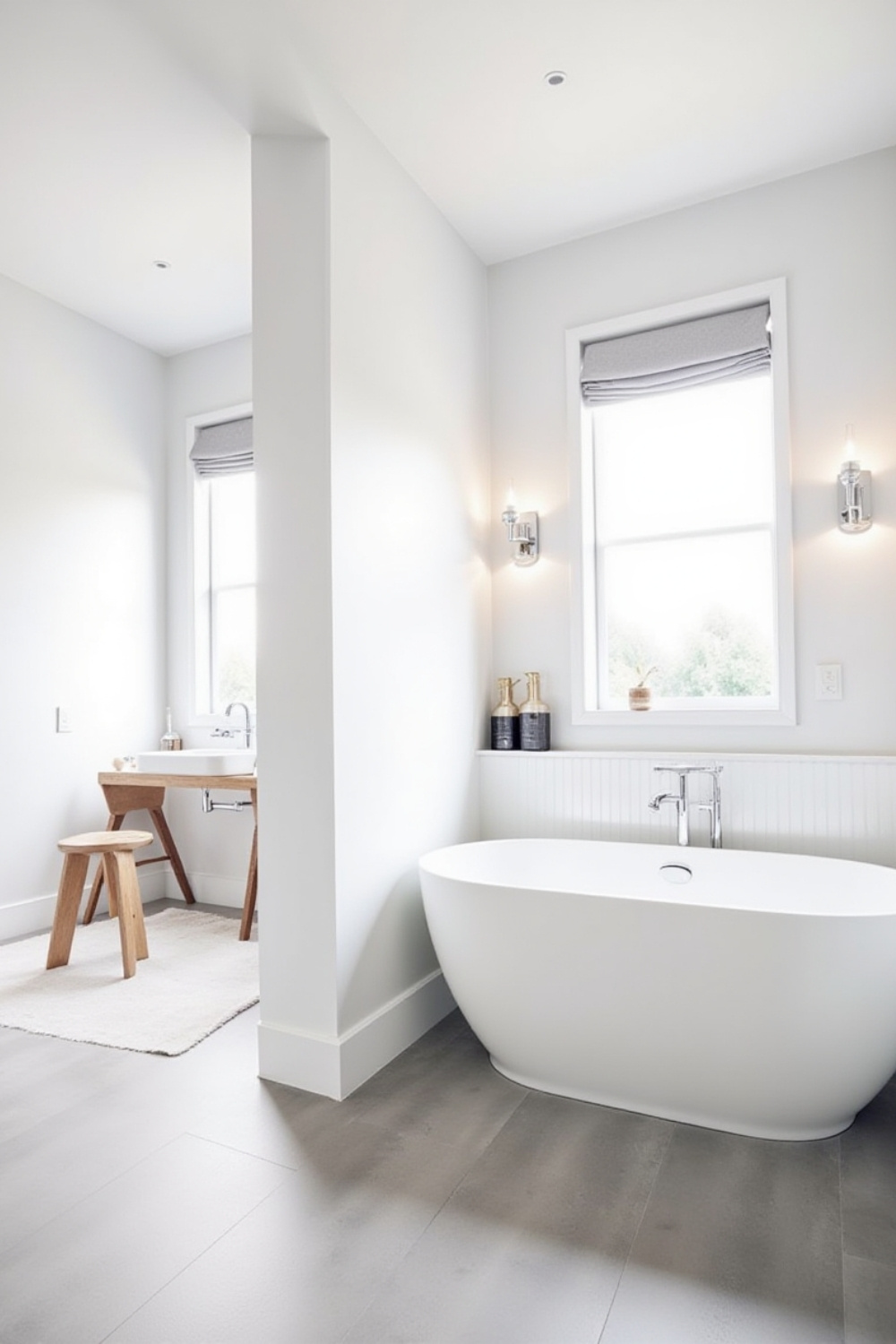
This aesthetic philosophy often appeals to cabin owners appreciating clean, functional design. Minimalist fixtures, natural materials, and calm colors typically create peaceful, uncluttered environments.
Design consideration: Minimalist approaches often require quality materials and excellent craftsmanship, while Nordic themes typically need appropriate lighting for seasonal variation.
Practical benefit: Simple designs often reduce maintenance requirements, while clean aesthetics typically create calming environments that support relaxation.
10. Lakeside Luxury Integration: Waterfront-Inspired Elements
This thematic approach often appeals to cabin owners near lakes wanting to reflect water settings. Luxury fixtures, nautical elements, and water views typically create resort-like experiences in cabin settings.
Design consideration: Luxury installations often require significant investment and professional installation, while nautical themes typically need authentic materials for lasting appeal.
Practical benefit: High-end features often provide exceptional comfort, while water themes typically create relaxing environments that enhance cabin experiences.
11. Natural Light Maximization: Brightness Enhancement Systems
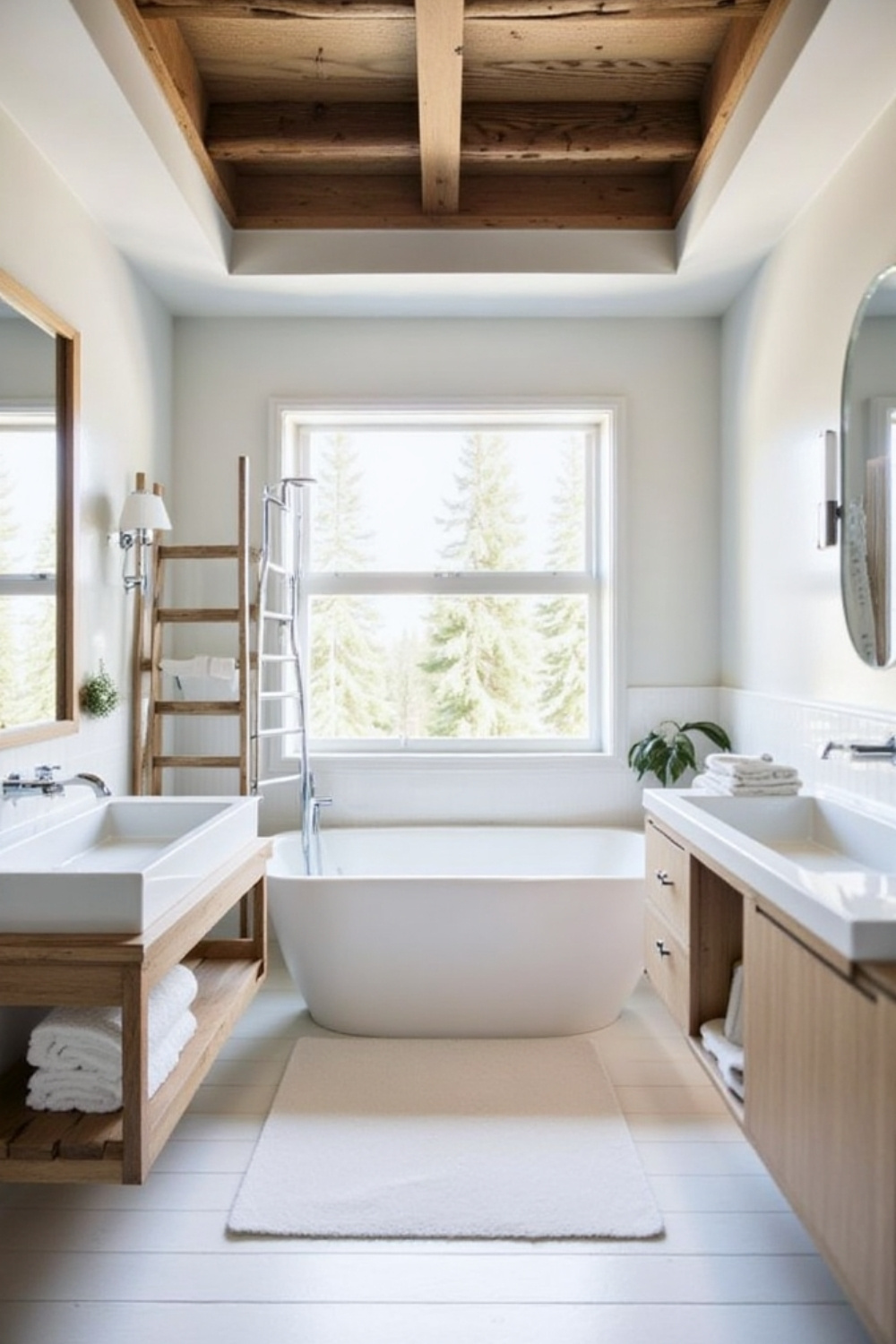
This illumination strategy often appeals to cabin owners wanting bright, airy bathroom environments. Large windows, skylights, and reflective surfaces typically maximize available natural light.
Design consideration: Natural light systems often require appropriate privacy solutions and condensation management, while reflective surfaces typically need regular maintenance to preserve effectiveness.
Practical benefit: Natural lighting often reduces energy costs, while bright environments typically improve daily functionality and mood.
12. Environmental Impact Reduction: Green Technology Integration

This sustainability approach often appeals to environmentally conscious cabin owners. Low-flow fixtures, renewable materials, and living elements typically reduce environmental impact while maintaining functionality.
Design consideration: Green technologies often require research for reliability and performance, while living elements typically need appropriate care systems and moisture management.
Practical benefit: Sustainable systems often reduce resource consumption, while environmental features typically improve air quality and provide educational value.
13. Whimsical Natural Themes: Playful Woodland Integration
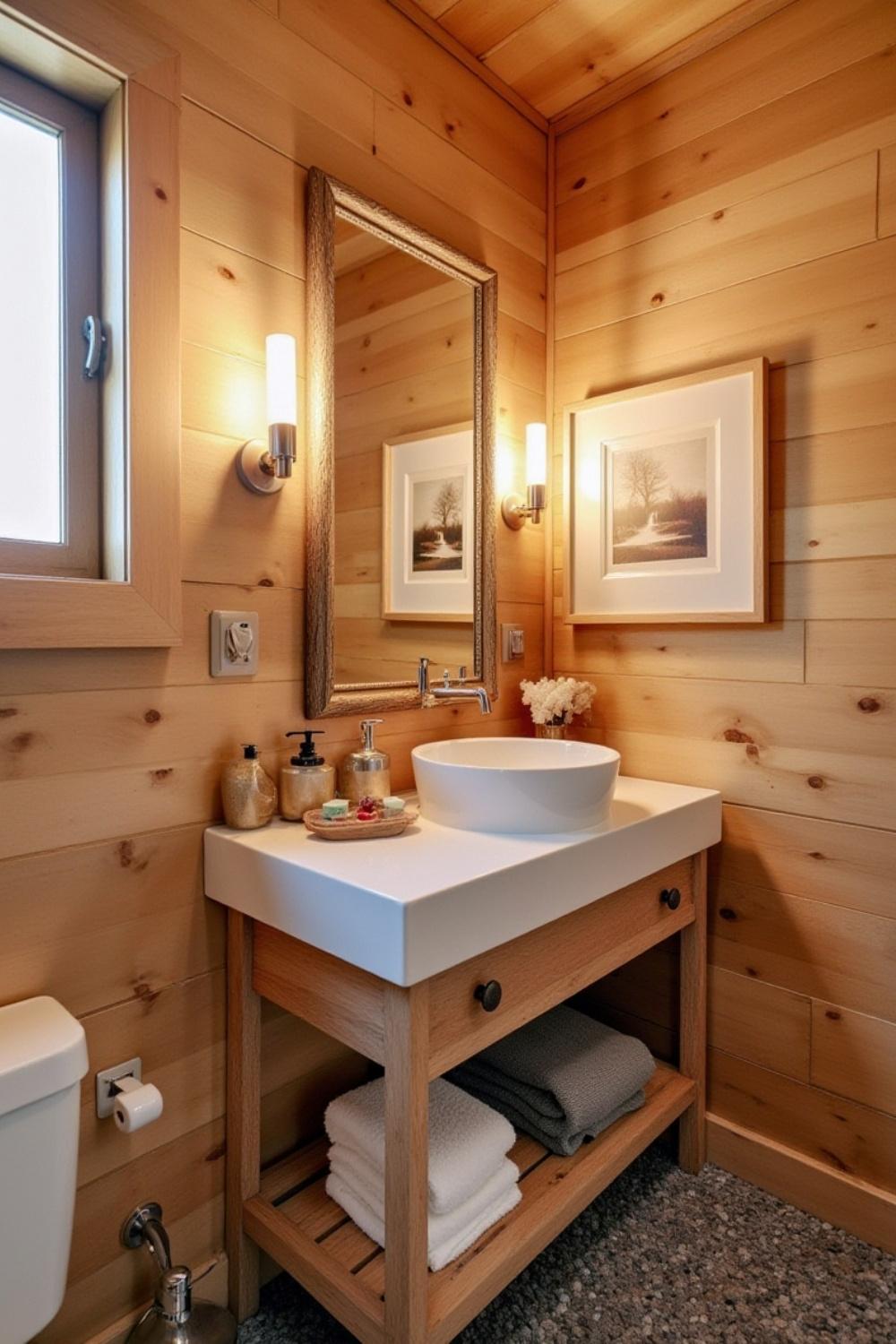
This creative approach often appeals to cabin owners wanting fun, personality-filled bathrooms. Nature motifs, natural textures, and playful elements typically create charming, distinctive environments.
Design consideration: Themed decorations often require coordination with practical needs, while natural textures typically need appropriate sealing and maintenance for bathroom conditions.
Practical benefit: Playful themes often create memorable experiences, while nature-inspired elements typically provide unique character that distinguishes cabin bathrooms.
14. Modern-Rustic Balance: Contemporary-Traditional Fusion
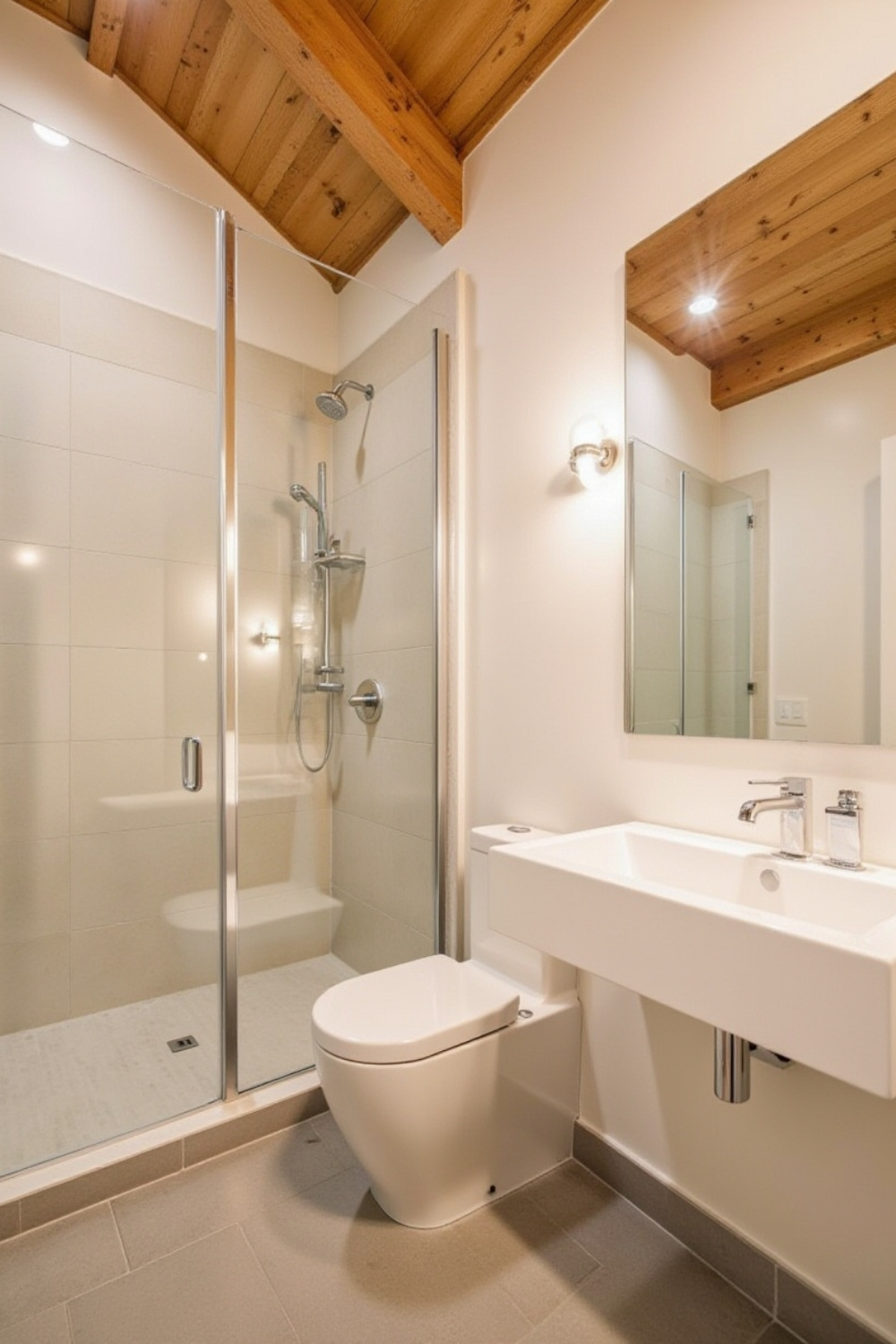
This design philosophy often appeals to cabin owners wanting updated functionality with authentic character. Sleek fixtures, rustic materials, and balanced aesthetics typically create sophisticated yet comfortable environments.
Design consideration: Style balance often requires careful material coordination, while modern fixtures typically need integration with traditional cabin electrical and plumbing systems.
Practical benefit: Contemporary elements often provide better functionality, while rustic materials typically maintain authentic cabin character and value.
15. Woodland View Integration: Forest Connection Design
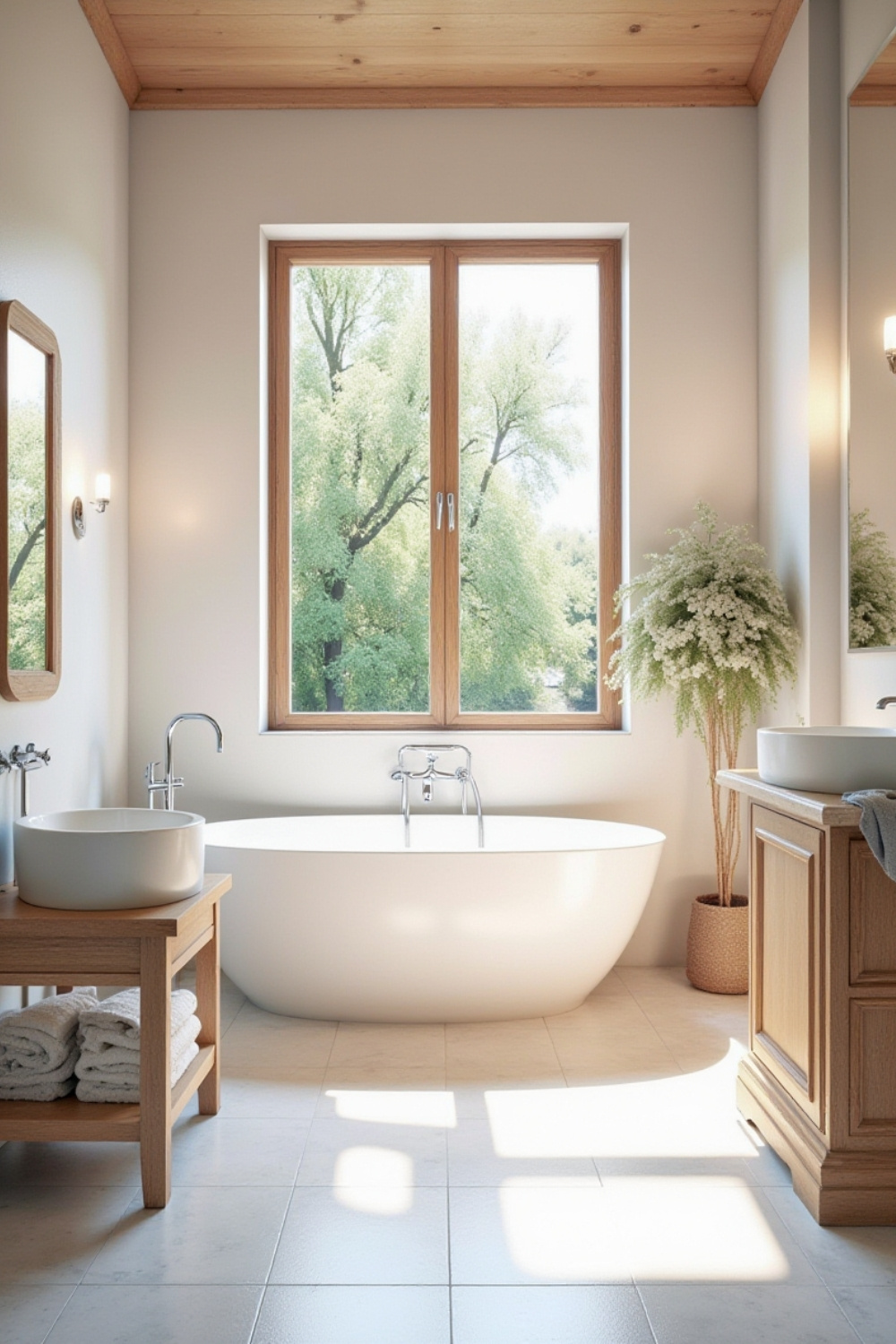
This environmental approach often appeals to cabin owners in forested settings wanting stronger nature connections. Natural materials, forest colors, and window placement typically blur indoor-outdoor boundaries.
Design consideration: Forest views often require appropriate window treatments for privacy, while natural materials typically need moisture protection and proper ventilation.
Practical benefit: Nature connections often improve mental health, while forest themes typically create calming environments that support relaxation and stress relief.
16. Sauna-Inspired Wellness: Spa Integration Elements
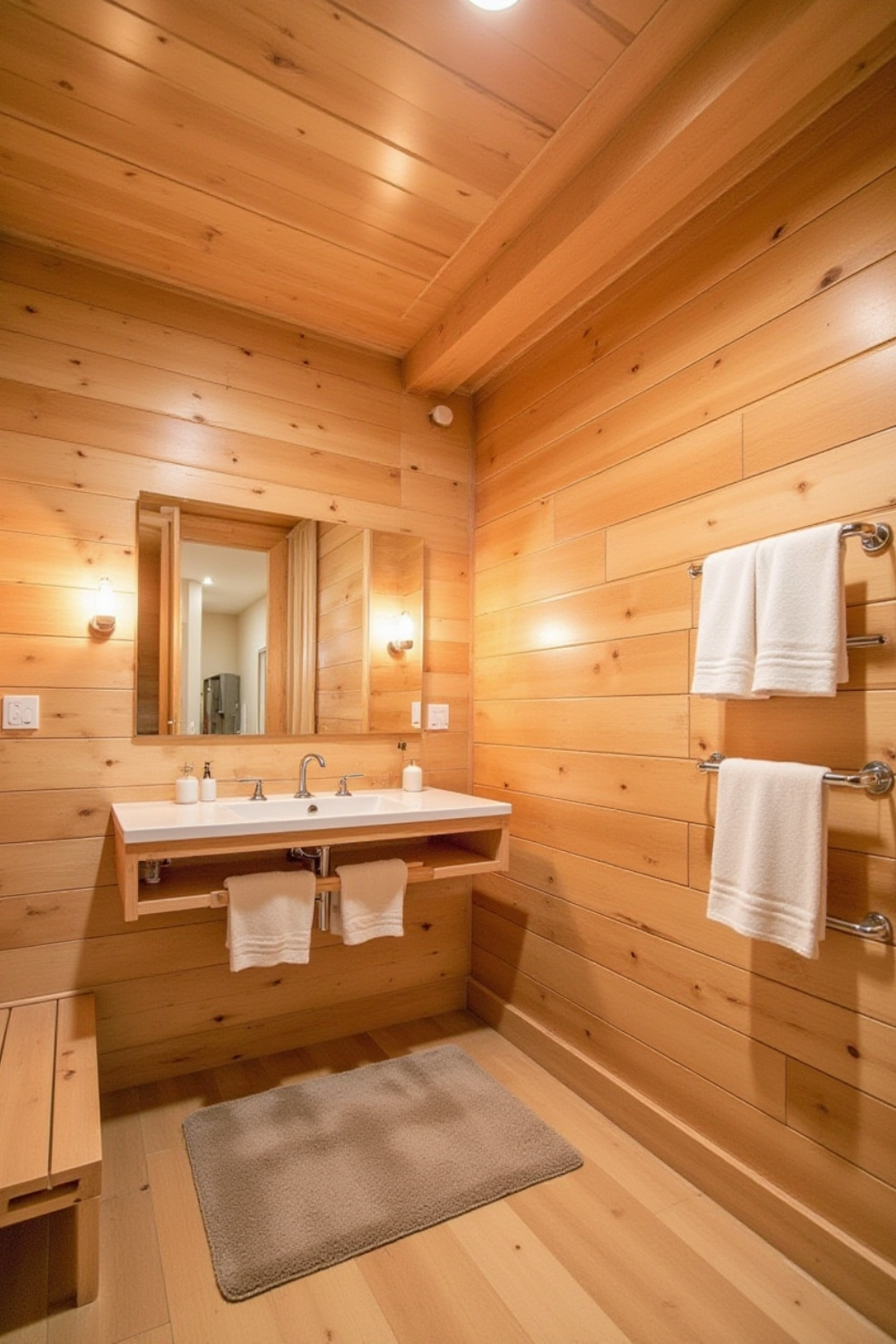
This wellness approach often appeals to cabin owners prioritizing relaxation and health benefits. Cedar elements, heated surfaces, and spa features typically create therapeutic environments.
Design consideration: Spa installations often require specialized electrical and plumbing work, while cedar materials typically need appropriate sealing and maintenance for longevity.
Practical benefit: Wellness features often provide health benefits, while spa elements typically create luxury experiences that enhance cabin retreat value.
17. Outdoor Enthusiast Design: Adventure-Themed Elements
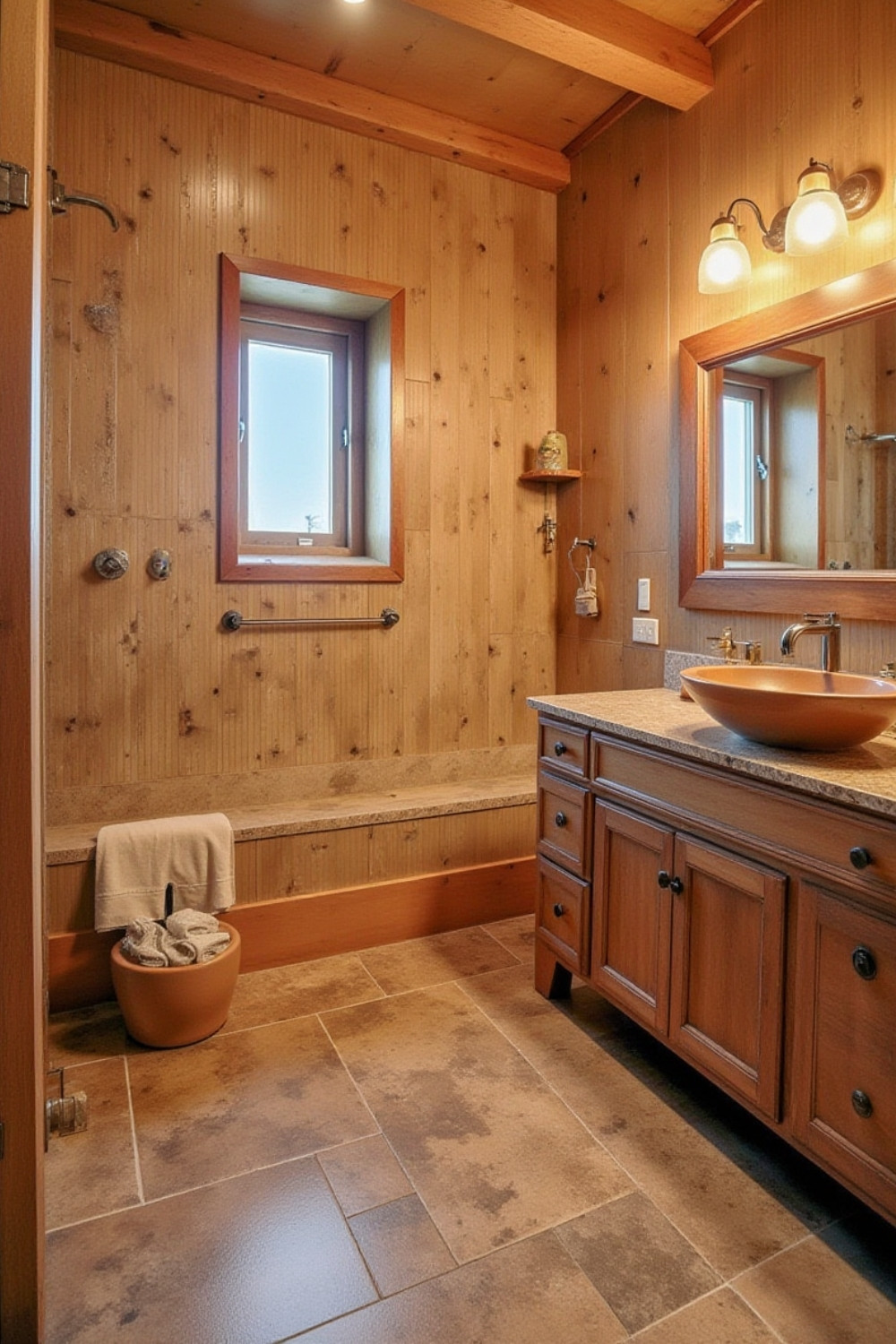
This lifestyle approach often appeals to cabin owners with active outdoor lifestyles. Rugged materials, practical fixtures, and adventure themes typically create functional spaces for outdoor enthusiasts.
Design consideration: Rugged installations often require durable materials and robust fixtures, while adventure themes typically need balance with comfort and daily usability.
Practical benefit: Practical design often supports active lifestyles, while durable materials typically withstand heavy use and provide long-term value.
18. Sophisticated Cabin Integration: Elegant Rustic Fusion
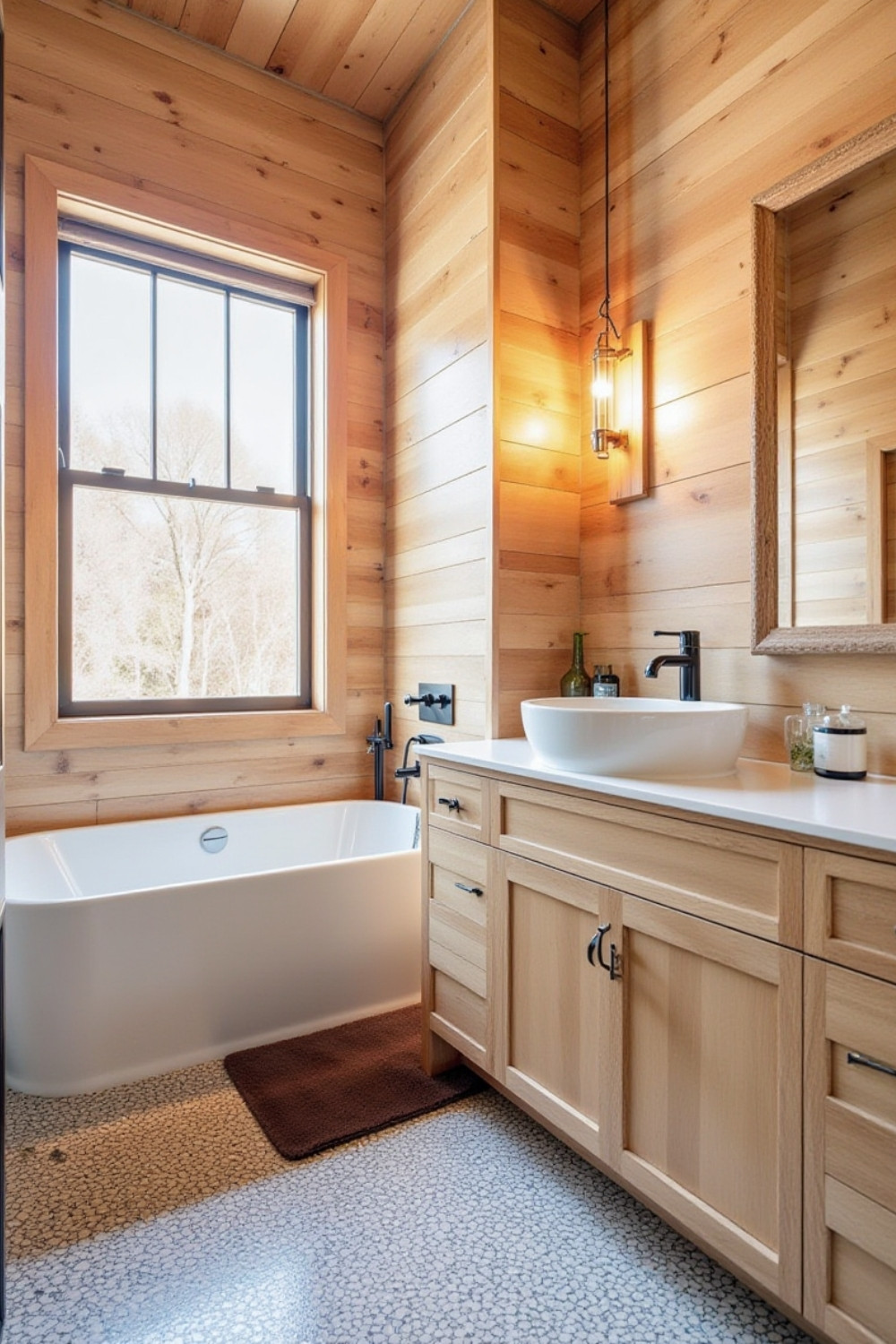
This upscale approach often appeals to cabin owners wanting luxury within rustic frameworks. Designer fixtures, quality materials, and elegant details typically create sophisticated yet authentic environments.
Design consideration: High-end materials often require professional installation and ongoing maintenance, while elegant details typically need coordination with cabin architectural styles.
Practical benefit: Quality installations often provide lasting beauty, while sophisticated design typically increases property value and appeal.
19. Streamlined Wood Integration: Clean Natural Aesthetics
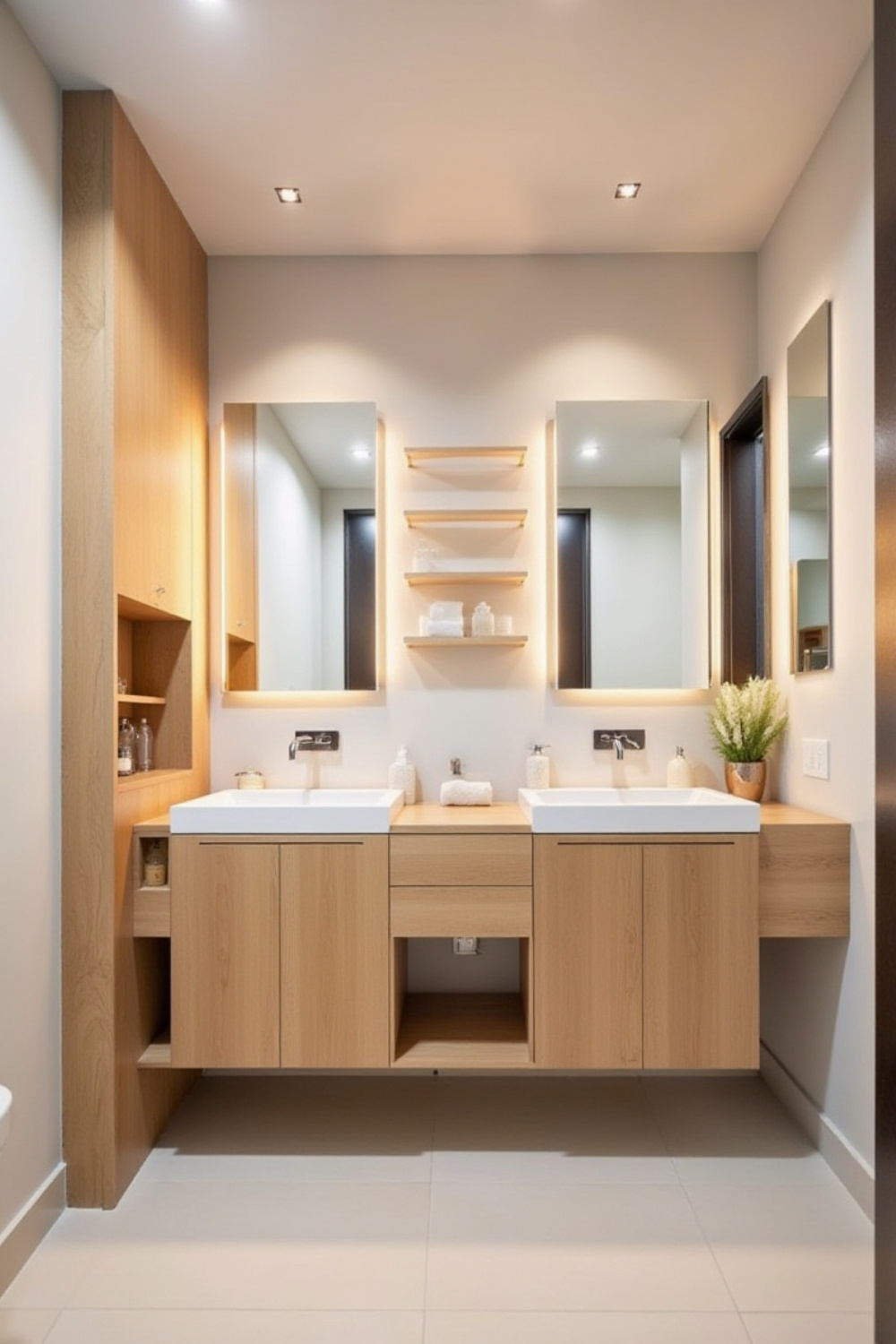
This material focus often appeals to cabin owners wanting uncluttered wood-centric design. Built-in elements, hidden storage, and clean lines typically create organized, peaceful environments.
Design consideration: Built-in installations often require custom work and professional construction, while wood elements typically need appropriate moisture protection and sealing.
Practical benefit: Streamlined design often improves functionality, while quality wood work typically provides lasting beauty and increases cabin value.
20. Masculine Outdoor Aesthetics: Rugged Cabin Elements
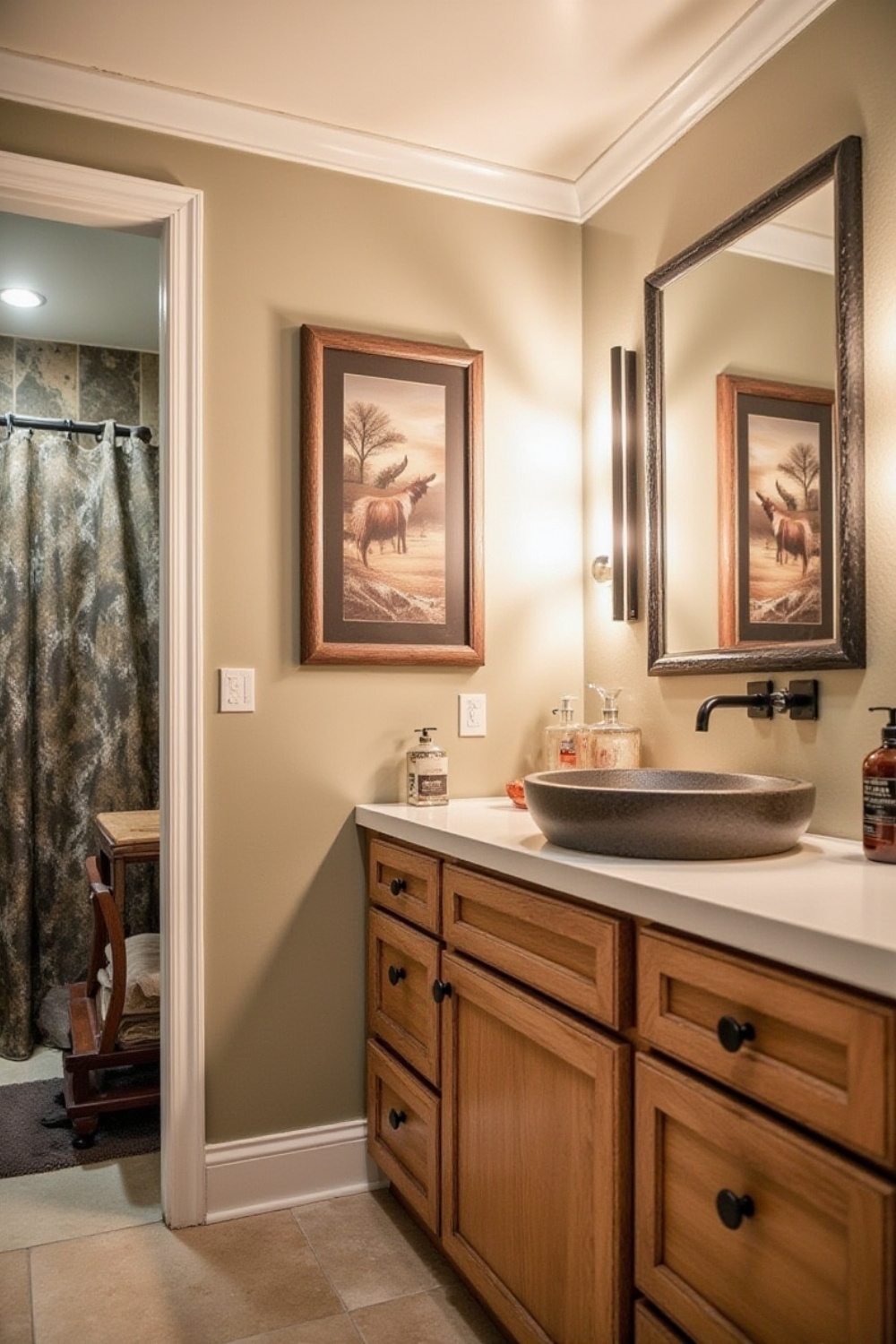
This style approach often appeals to cabin owners wanting robust, masculine design themes. Unfinished materials, outdoor motifs, and practical fixtures typically create authentic outdoor environments.
Design consideration: Unfinished materials often require appropriate treatment for bathroom use, while themed decorations typically need balance with safety and functionality.
Practical benefit: Rugged design often provides durability, while authentic themes typically create distinctive character that reflects cabin lifestyle values.
21. Fireplace Comfort Integration: Warming Element Addition
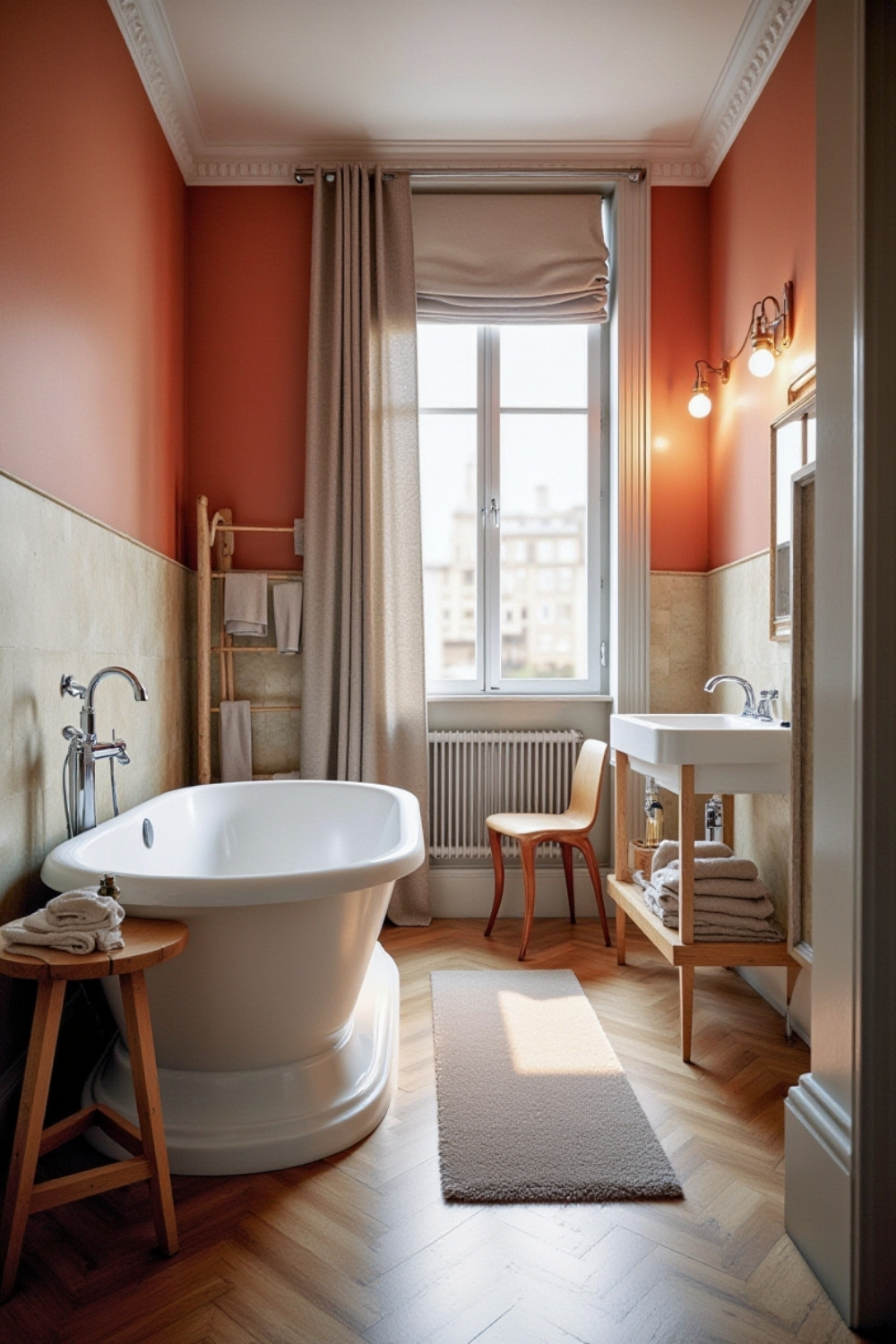
This comfort strategy often appeals to cabin owners in cold climates wanting ultimate relaxation. Heating elements, warm materials, and cozy features typically create luxury comfort environments.
Design consideration: Heating installations often require professional electrical work and safety considerations, while fireplace elements typically need appropriate ventilation and clearances.
Practical benefit: Warming features often extend usability during cold seasons, while comfort elements typically create memorable, luxurious cabin experiences.
22. Celestial Theme Integration: Night Sky-Inspired Elements
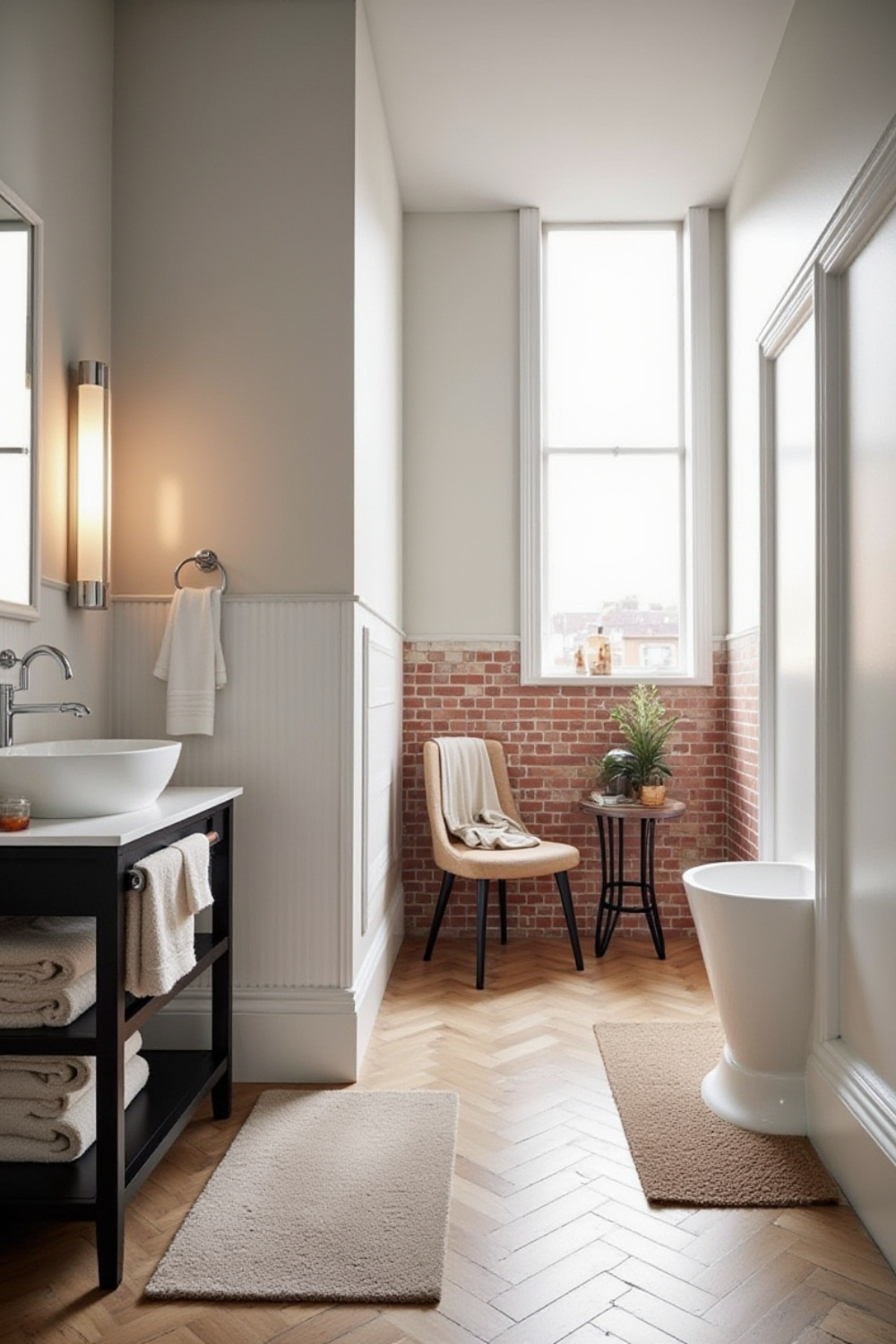
This creative approach often appeals to cabin owners in dark-sky areas wanting unique, atmospheric design. Star themes, dramatic lighting, and celestial elements typically create magical, distinctive environments.
Design consideration: Specialty lighting often requires professional installation and appropriate controls, while themed elements typically need coordination with practical illumination needs.
Practical benefit: Unique themes often create memorable experiences, while atmospheric lighting typically provides relaxation benefits and distinctive character.
23. Hearth-Style Comfort: Home-Like Warmth Integration
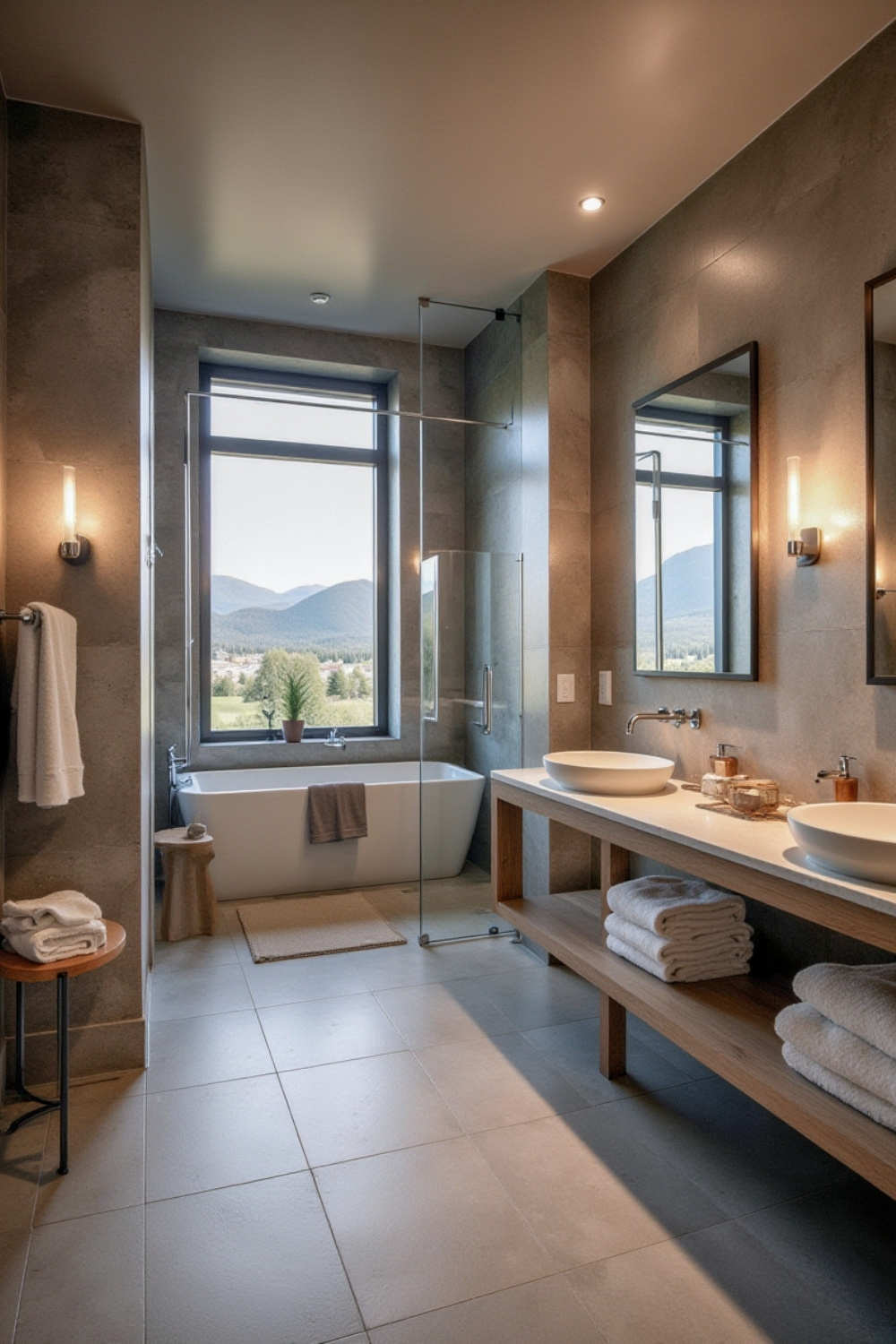
This comfort philosophy often appeals to cabin owners wanting home-like bathroom environments. Warming elements, comfortable seating, and cozy features typically create living room-like comfort.
Design consideration: Comfort additions often require space planning and appropriate electrical work, while seating elements typically need moisture-resistant materials and proper ventilation.
Practical benefit: Home-like features often improve daily comfort, while cozy elements typically create stronger emotional connections to cabin spaces.
24. Mountain Spa Integration: Rocky Mountain-Inspired Luxury
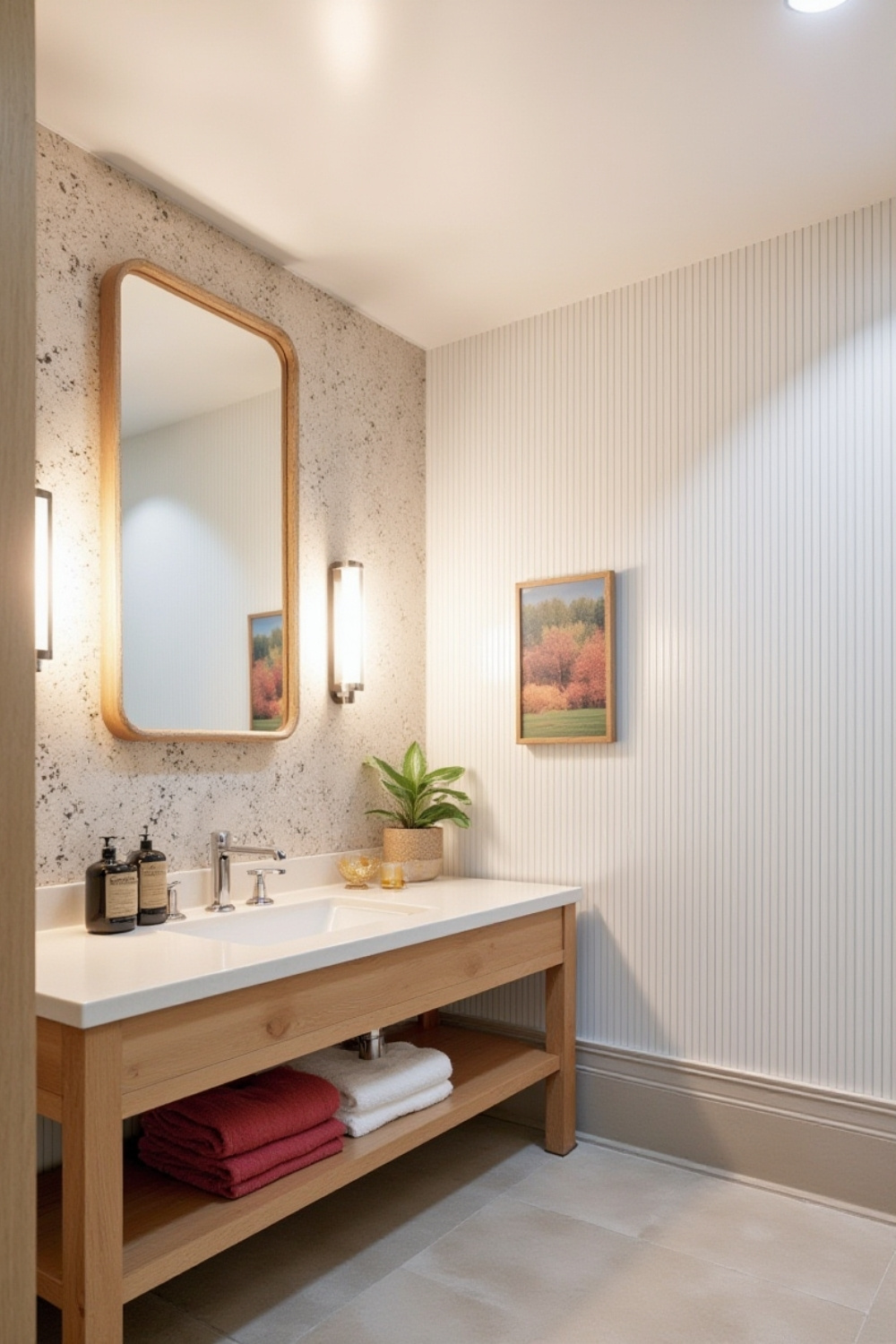
This luxury approach often appeals to cabin owners in mountainous areas wanting spa-like experiences. Natural stone, water features, and luxury elements typically create resort-quality environments.
Design consideration: Luxury installations often require significant investment and professional installation, while water features typically need appropriate drainage and maintenance access.
Practical benefit: Spa features often provide health and relaxation benefits, while luxury elements typically create exceptional experiences that enhance cabin retreat value.
25. Pine Forest Integration: Woodland Scent and Character
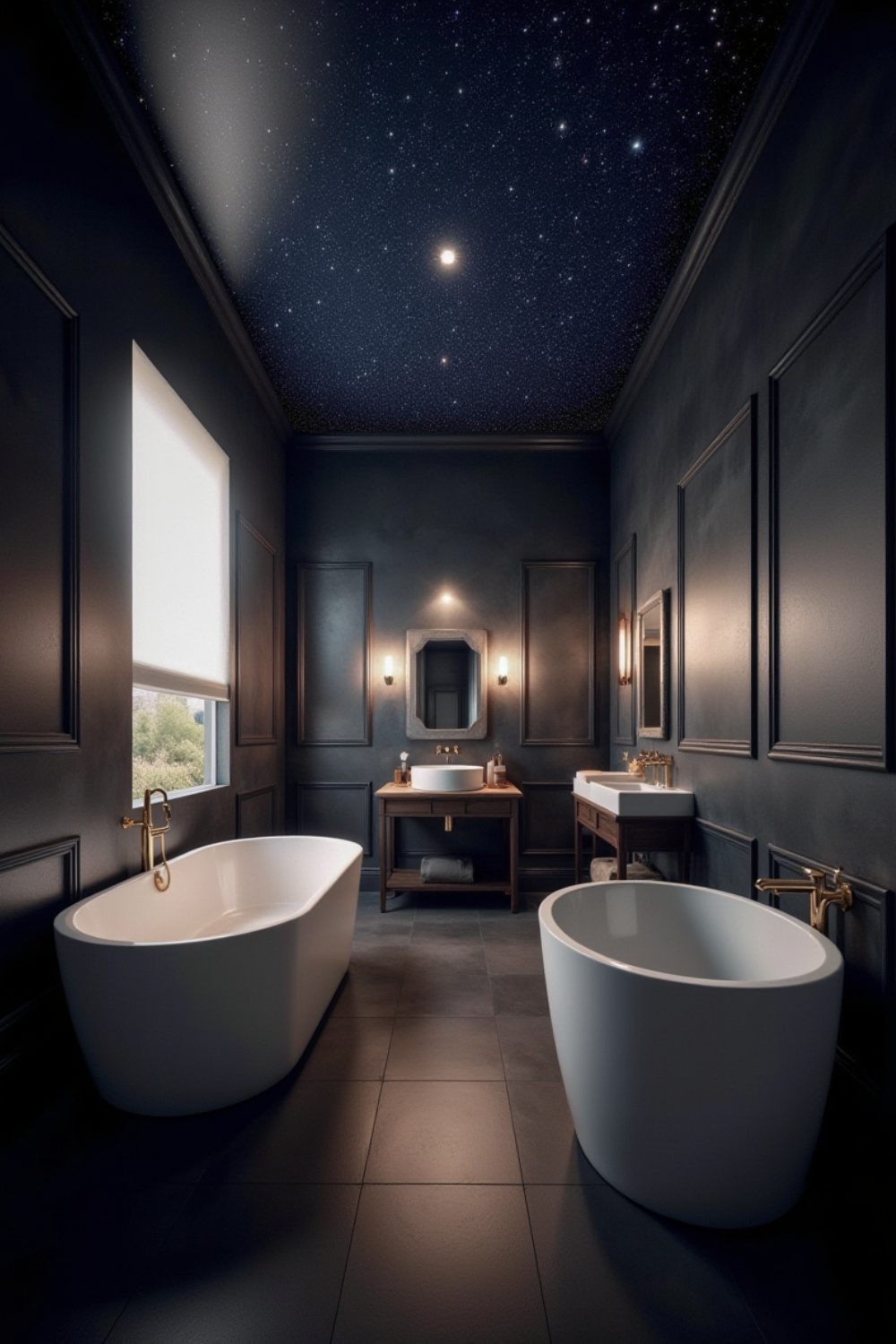
This sensory approach often appeals to cabin owners wanting full forest immersion. Pine elements, natural scents, and woodland themes typically create authentic forest experiences.
Design consideration: Natural scent elements often require consideration of sensitivity and maintenance, while pine materials typically need appropriate sealing for bathroom moisture conditions.
Practical benefit: Sensory elements often enhance relaxation, while authentic materials typically create stronger connections to natural cabin environments.
26. Water Feature Integration: Cascading Luxury Elements
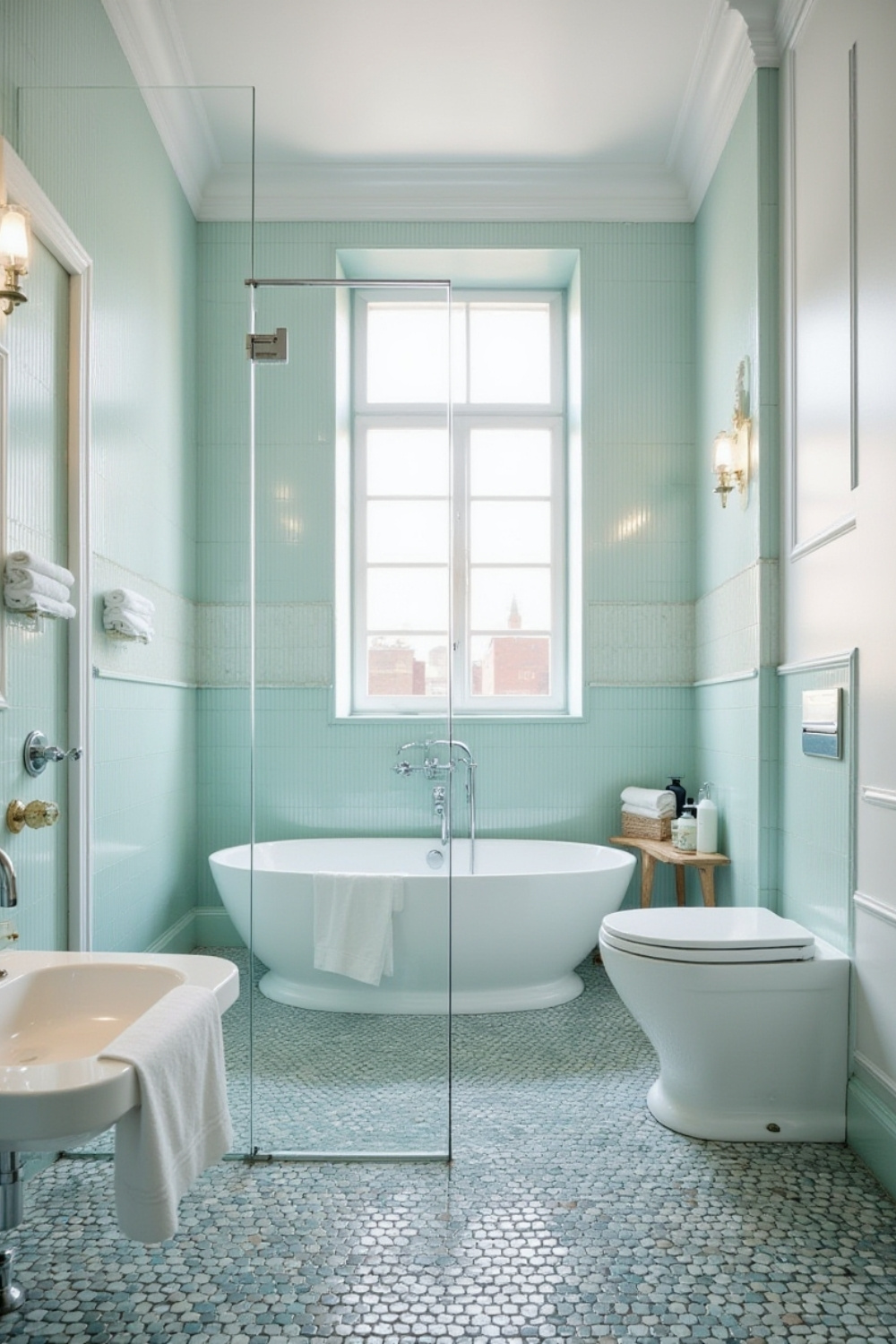
This luxury approach often appeals to cabin owners wanting dramatic, spa-like features. Water elements, glass tiles, and luxury fixtures typically create resort-quality experiences.
Design consideration: Water features often require complex plumbing and professional installation, while luxury elements typically need ongoing maintenance and appropriate support systems.
Practical benefit: Dramatic features often provide exceptional experiences, while luxury installations typically create significant property value enhancement.
27. Unified Timber Design: Cohesive Wood Integration
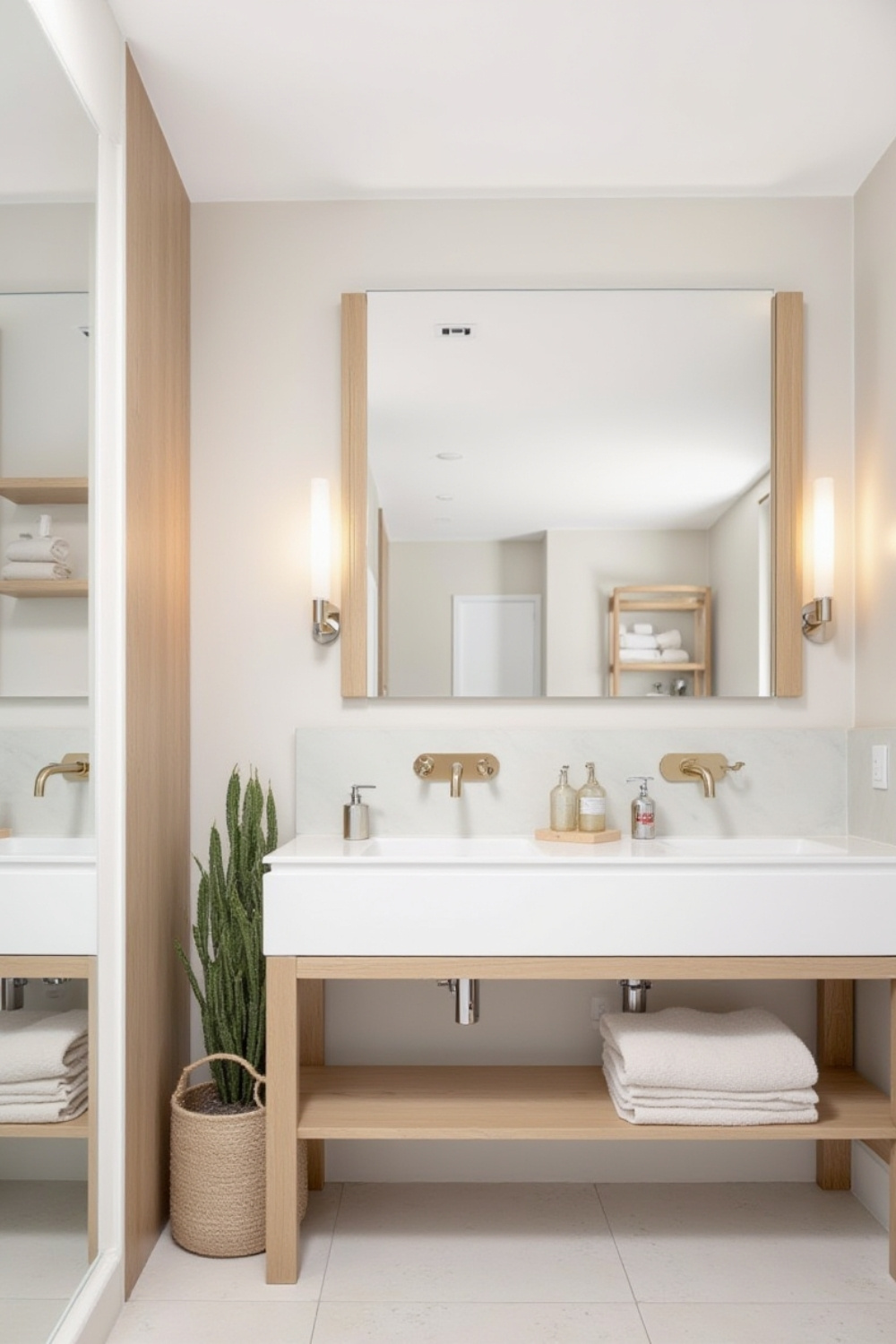
This material philosophy often appeals to cabin owners wanting harmonious, natural design unity. Consistent wood elements, natural finishes, and coordinated details typically create peaceful, organized environments.
Design consideration: Coordinated wood installations often require professional matching and finishing, while natural materials typically need appropriate moisture protection and maintenance planning.
Practical benefit: Unified design often creates calming environments, while quality wood work typically provides lasting beauty and cohesive cabin character.
28. Birch Bark Integration: Distinctive Natural Texture
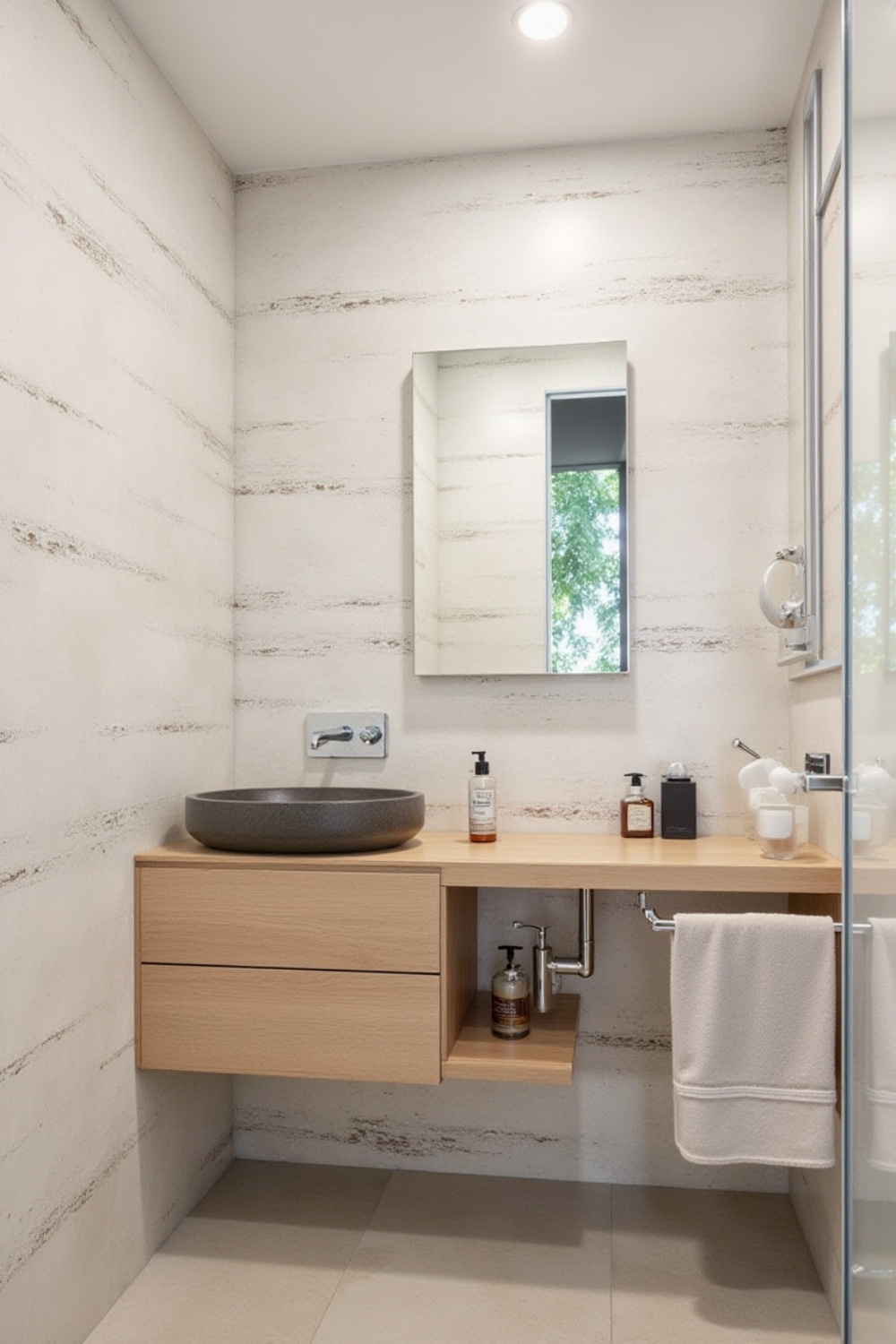
This unique approach often appeals to cabin owners wanting distinctive, elegant natural elements. Birch accents, refined finishes, and natural textures typically create sophisticated woodland environments.
Design consideration: Birch materials often require specialized sourcing and installation, while natural textures typically need appropriate sealing and protection from moisture damage.
Practical benefit: Distinctive materials often create unique character, while elegant natural elements typically provide sophisticated beauty that ages gracefully.
29. Scenic View Maximization: Panoramic Integration Design
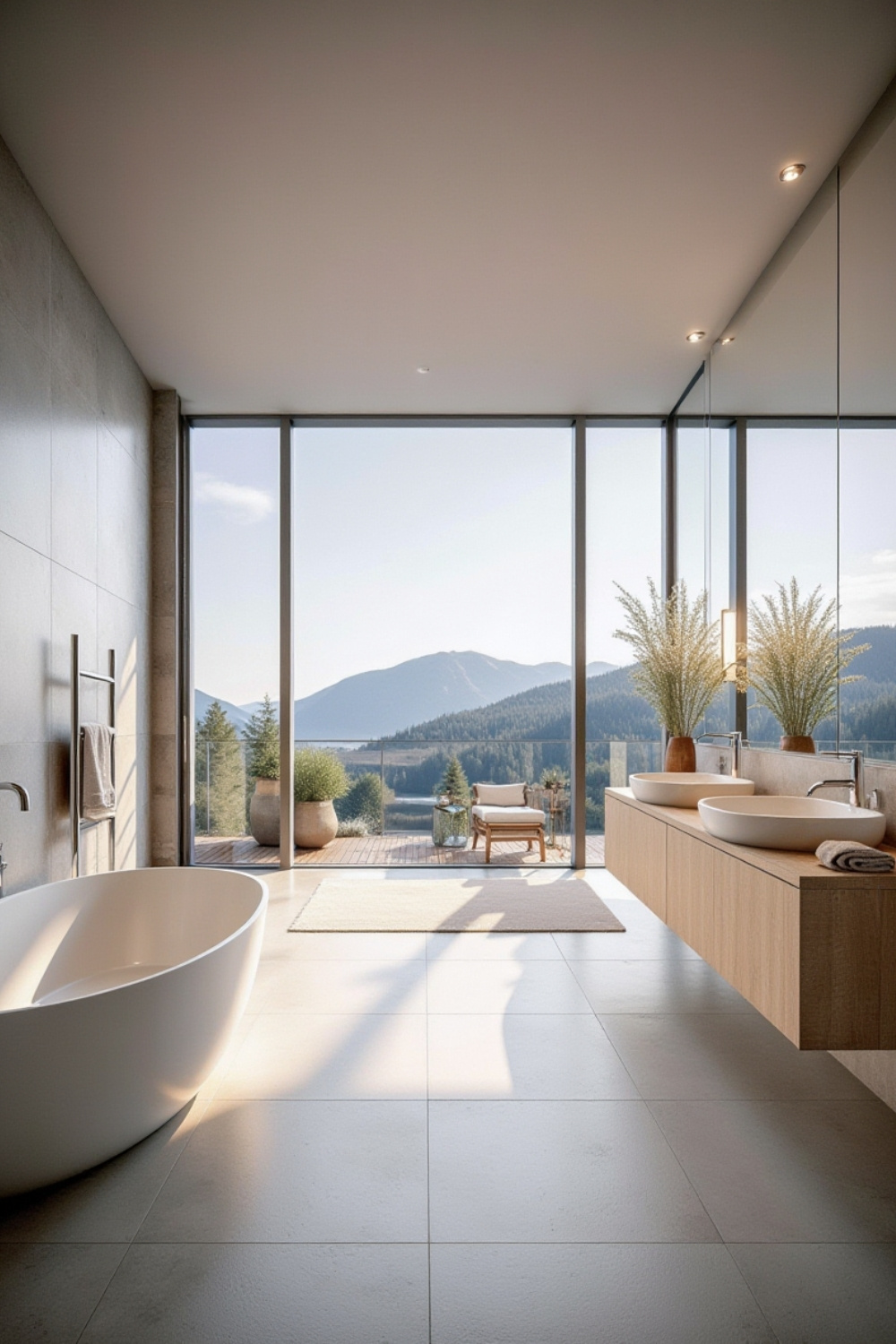
This architectural approach often appeals to cabin owners with exceptional views wanting to maximize scenic connections. Large windows, minimal decoration, and view-focused layouts typically showcase natural beauty.
Design consideration: Large window installations often require structural evaluation and energy-efficient glazing, while minimal decoration typically needs balance with practical storage and functionality.
Practical benefit: Scenic integration often provides exceptional daily experiences, while view-focused design typically creates unique, memorable environments that enhance cabin value.
Creating Your Log Cabin Bathroom Retreat
Understanding these design approaches often helps cabin owners create bathrooms that successfully balance rustic character with modern functionality and safety requirements. Effective implementations typically start with moisture management and structural considerations, then layer in authentic materials and comfortable features that enhance cabin living experiences.
Successful log cabin bathroom projects often prioritize appropriate materials and professional installation while ensuring designs meet building codes and support daily living needs. The result typically creates functional, beautiful environments that honor cabin traditions while providing modern comfort and safety.
When planning your cabin bathroom renovation, consider how these elements work together to create spaces that reflect both practical needs and cabin lifestyle values. The most effective designs often balance authentic character with contemporary functionality while ensuring proper moisture control and structural protection.
Remember: For any plumbing work, electrical installations, structural modifications, heating systems, or major fixture installations related to cabin bathroom renovations, always consult with licensed professionals including plumbers, electricians, and contractors to ensure proper installation, safety compliance, and adherence to local building codes and cabin construction requirements.

